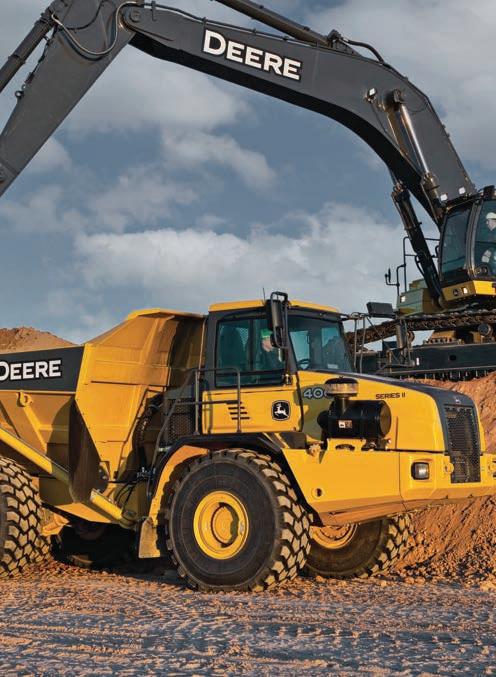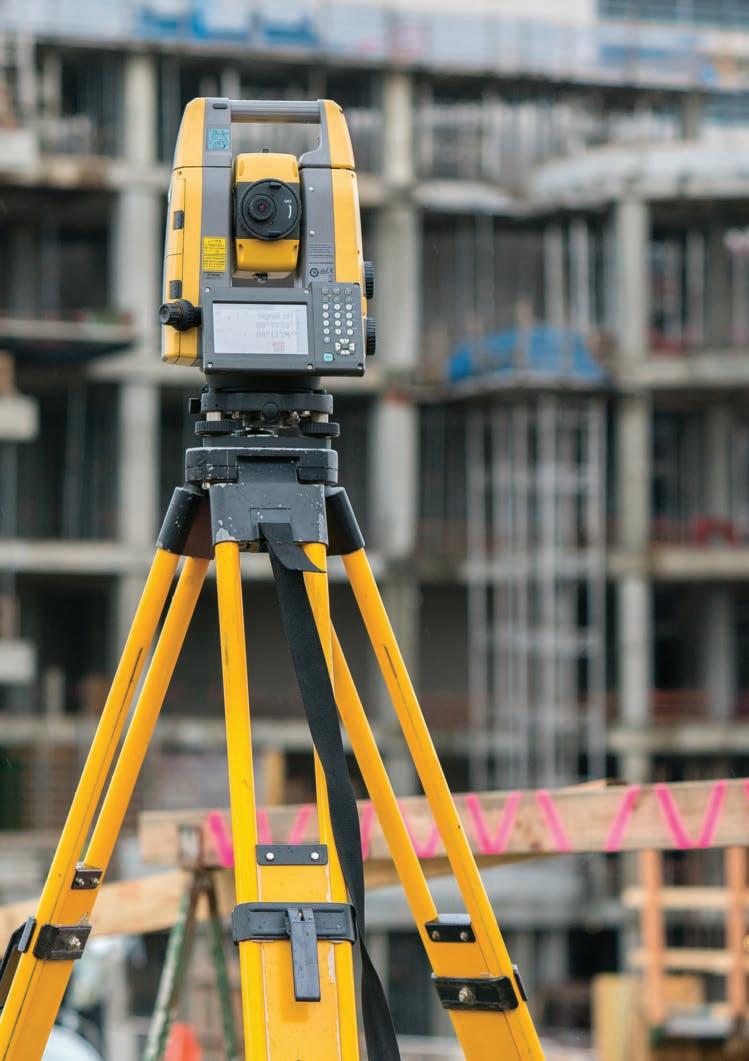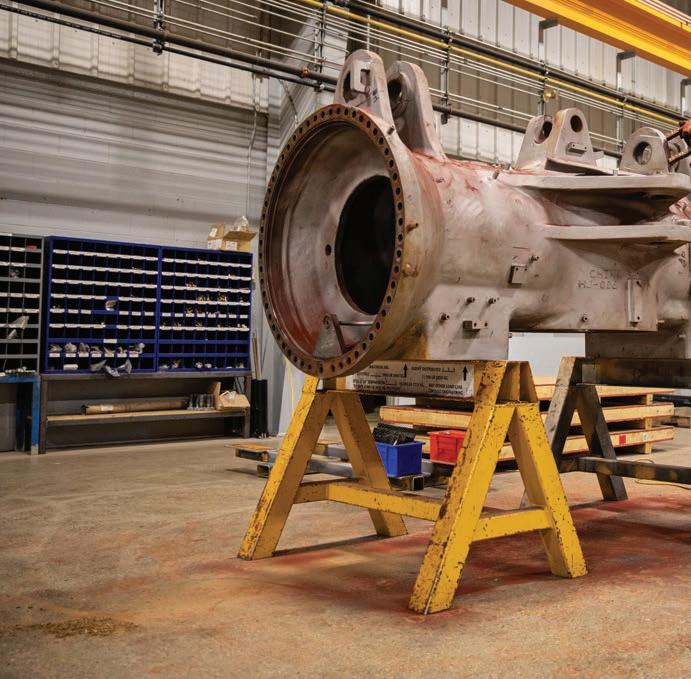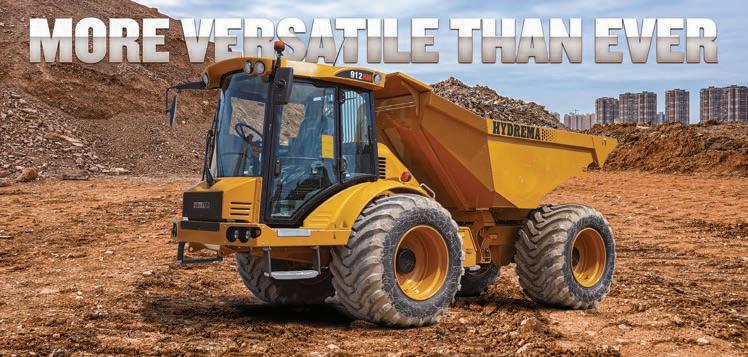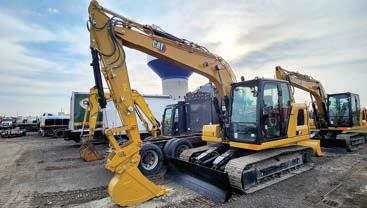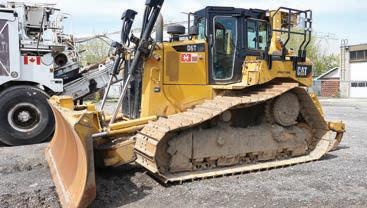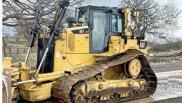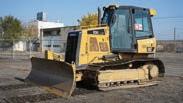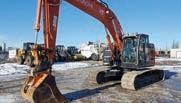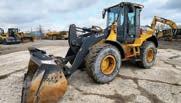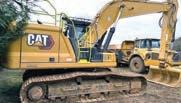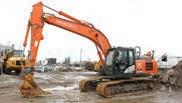






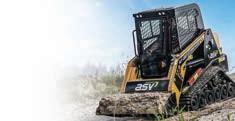

























FEATURED






ADVERTISER INDEX MAY 22/2023
LETTER FROM


































FEATURED






LETTER FROM
In my neighbourhood in Mississauga, Ontario, one of the most contentious issues is the redevelopment of the Lakeview Generating Station, better known as The Four Sisters.
At 2,400 megawatts, The Four Sisters was considered the largest coal-fired station in the world. Before its demolition in 2006, the coal burning power plant generated 215 billion kWh of electricity in its more than four decades of operation.
The four smokestacks (or sisters) were a landmark for the southeastern end of the city.
Today, the 177-acre lakefront property is on its way to becoming Lakeview Village, a massive development that will include more than 8,000 residential units, more than 200,000 square feet of retail space, 1.9 million square feet of space for office use and create 9,000 long-term jobs.
The design of Lakeview Village is also the pinnacle of sustainable development and includes a district level energy plant, a 15-minute city design and various other innovative green technologies.
Mississauga Mayor Bonnie Crombie has said Lakeview Village will help turn the city’s waterfront into a worldclass destination that will rival Stockholm, Chicago and San Francisco.
“The Lakeview Development will revitalize our city. Not only will it be an ideal place to live and work, it will also become a tourism destination with views like no other,” Crombie said.
I understand that comparing Mississauga to Stockholm is unnerving for residents that have lived in the neighbourhood for several decades. Any change, let alone change on this massive
scale, can be frightening.
What has surprised me is a few recent, and negative, comments made by a neighbour who works in construction. These were the usual not-in-my-backyard (NIMBY) concerns of too much traffic, not enough schools and rather far-fetched environmental concerns.
While his employer isn’t part of the consortium building Lakeview Village, the opportunity for spinoff construction activity will be ongoing for years.
Development has already led to the addition of a new QEW interchange, while other properties in the largely industrial area are transforming to serve a wider scope of the community.
The answer to many of the concerns is also more construction via building more roads or schools to accom -
Bill Tremblay // Editor editor@equipmentjournal.com
modate new residents. The site is undoubtedly creating opportunity for all trades, and opposition may someday equal an ironic situation. That’s not to say a career in construction should automatically equal applause for every shovel that pierces the ground, but at the end of the day, I’d rather live near a destination waterfront than four old smokestacks.
CONTACT US
Editor Bill Tremblay editor@equipmentjournal.com
Publisher Mark Baker mark@equipmentjournal.com
PACE
Sales Manager Tara Rosen tara@equipmentjournal.com
National Account Manager Mona Fahmi mona@equipmentjournal.com
TOLL-FREE: CDN/USA 1-800-667-8541
Creative Director/Creative Services Ryan Chuhaniuk ryan@equipmentjournal.com
Circulation Manager Lisa Bath lisa@equipmentjournal.com
EMAIL US: advertise@equipmentjournal.com
WEBSITE: www.equipmentjournal.com
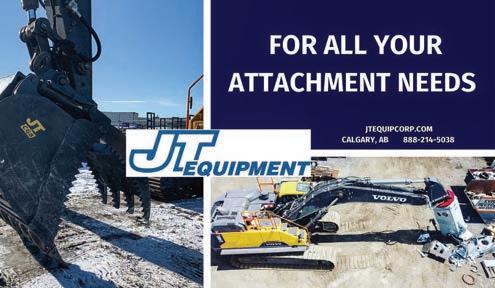
Develon is expanding its -7 Series of crawler excavators with the release of the 100tonne DX1000LC-7.

As the largest crawler excavator in Develon’s -7 Series, the conventional tail swing machine is ideal for pit and quarry customers as well as a large earthmoving and excavating machine for heavy construction and infrastructure projects.
“The DX1000LC-7 is designed to serve a growing crawler excavator size class,” said Thomas Lee, Director of Product Management at Develon. “It can efficiently load large amounts of material into trucks at quarries. On construction sites, the DX1000LC-7 excavates, stockpiles and loads material into dump trucks.”
Uptime protection
The DX1000LC-7 excavator includes smart machine technology and a rugged design for maximum uptime protection. The excavator includes a crossed-design swing bearing that distributes stress. As well, attention was given to reinforcing the excavator’s wear points to boost the machine’s reliability and keep it running longer. The excavator also includes a heavy-duty front design with additional reinforcement on key stress points to ensure uptime protection.
Operators can select a swing priority mode for bank cutting to increase the swing speed and maximize productivity. The boom up function is prioritized when the swing priority is turned off.
“The new DX1000LC-7 excavator has the highest swing torque in its size class,” Lee said. “This is especially important for aggregate producers when they routinely turn or rotate the excavator’s upper structure to move rocks and other material.”
DX1000LC-7 crawler excavator specs

· Horsepower: 629 hp
· Operating weight: 100,199 kg

· Bucket breakout force: 88,185 lbf
· Arm breakout force: 78,850 lbf
· Maximum digging depth: 8.8 metres
· Maximum digging reach : 14.3 metres
· Bucket capacity: 5.4
cubic metres
The excavator’s exclusive D-EcoPower system helps to
improve productivity and save fuel. The hydraulic system precisely controls oil flow and optimizes the engine’s available horsepower. The system’s efficiency not only improves productivity but also reduces fuel consumption.

Operators can choose between two modes: boom and swing. This allows operators to adjust the machine to best match the job at hand, giving priority to boom or swing movements. Boom priority is ideal in harsh conditions, such as digging over the front or dumping over the side of the machine. Swing priority works best in normal or light-duty digging situations.
In the cab
The crawler excavator cab is equipped with a push-button start and high-quality interior fit and finish.
The DX1000LC-7 cab contains a 20-cm touchscreen LCD monitor for high visibility and easy access. The screen is 30 per cent larger than previous models.
Ergonomic adjustments such as redesigned foot pedals and heated seats make long days more enjoyable.

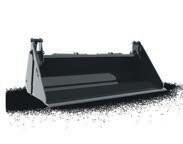

The shortcut button on the joystick is configurable to an operator’s preference so they can adjust the wipers, mute the audio or control the camera. The button can also be used to activate the optional intelligent floating boom feature. This enhancement helps to increase operator effectiveness and keep the operator’s hand on the controls.
The optional 360-degree all-around view monitoring (AVM) camera system displays a full view of the machine’s surroundings, giving operators greater confidence when positioning and operating the machine in tight work areas. Five visual perspectives can be seen from the separate AVM monitor: top view, rear view, top and right view, rear and corner view and 3D view.
The new excavator comes with unlimited access to the Develon Fleet Management telematics system.

The system allows equipment owners and fleet managers to remotely monitor machine location, hours, fuel usage, engine idle versus work time, and error codes, as well as engine and hydraulic tem -
peratures. Machines can be monitored via an online account.
In addition, dealers can use the system to provide improved customer support by responding to machine warning messages and alerts, troubleshooting machine issues, and then sending a field service vehicle to deliver the proper parts and help with repairs.
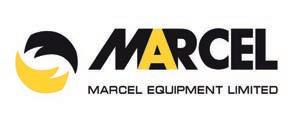
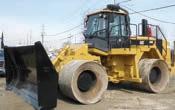
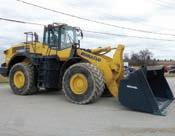

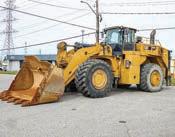

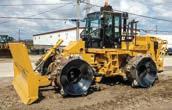
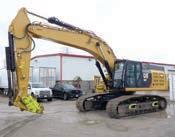
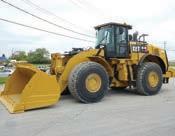
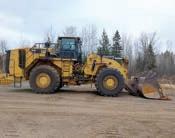
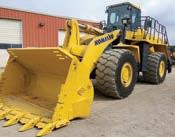
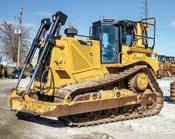



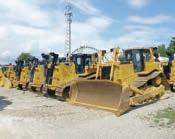
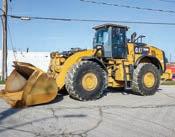

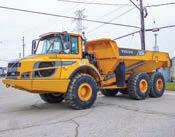
Rototilt will invest in a final product assembly line at its Canadian headquarters in Brantford, Ontario – a strategic step for the North American market.
The idea of a final assembly and a testing facility came to a reality in 2019, when Rototilt moved into the current location in Brantford.
“This enables us to assemble any tiltrotator configuration according to our customer requirements, and with a shorter delivery time,” said Country Manager Chris Copeland. “Tiltrotators are becoming more widely accepted in the industry, and by having North American assembly we can effectively supply the domestic market.”
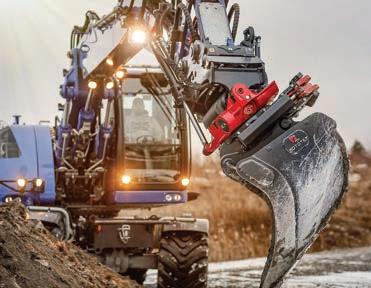
Rototilt Group develops tiltrotators, machine couplers and work tools for a safer and more efficient work environment for machine operators around the world.
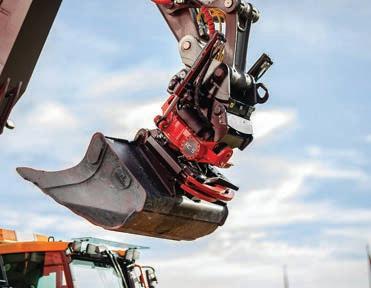
Rototilt products have been represented in Canada and Brantford since the early
1990s. During this time, the company has partnered with many dealers and end-users.

“Rototilt were the pioneers of the tiltrotator concept globally and were also the first in North America. Since we started to develop the tiltrotator market here, we’ve partnered with many loyal customers,” Copeland said.
“Most of those who have tiltrotators say that they will never work without one. We see great potential for the North American market and in the last three years we have started to notice a snowball effect with a significant increase in demand for our products.”
Copeland explained that a growing customer base, greater demand for special configurations, and final assembly in Canada will allow Rototilt to respond more quickly with the right mix of products.
“We don't want to have fully built products waiting on a shelf – our main stra -





Haver & Boecker Niagara has acquired partial ownership in Tandem Products Inc.
Based in Minneapolis, Minnesota, Tandem Products is a long-standing family-owned polyurethane producer of open cast screen media and liners for the mining, concrete, industrial and grain industries.
The joint venture is the result of many years of successful sales and production partnership between the two family-owned businesses.
The companies bring together a focus on innovative engineering and a unique customer solution-driven market approach.

The combined worldwide sales channels and expan-
sion of Haver & Boecker Niagara to a North American polyurethane manufacturer further support the manufacturer’s business motivation and will benefit both companies’ plans for growth.
Tandem Products will continue to serve its current and new customers with its Rhino-Hyde brand, as well as with modular polyurethane screen media which will carry the Niagara brand.
Haver & Boecker Niagara open cast polyurethane products have been manufactured at Haver & Boecker Niagara in Brazil for several years, and the partial acquisition rounds out the Niagara screen media brand for the mineral processing manufacturer.


tegic objectives with the final assembly are about being flexible and reliable, providing customers with faster deliveries than ever before,” Copeland said.
Thanks to the market growth in North America in the recent years, Rototilt has since expanded their Canadian facility from 17,000 to 23,000 square feet. They are also anticipating new hires ahead.
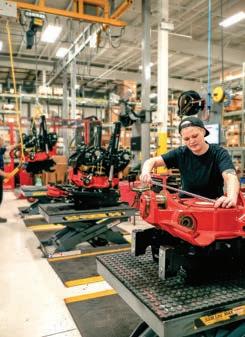
“We plan to hire at least three additional people in order to increase our capacity and satisfy the market demand” Copeland said.
“Since moving to our new facility we have developed a new team of people to start up the assembly function. Since then, they have gained factory training, and valuable expert knowledge in not just the products, but more importantly the processes
necessary to assemble them to the same high standard as those coming out of the factory in Sweden.”
Now, all Rototilt tiltrotator models from R1 to R8 are fully assembled in Brantford, and the RC9 models will join the assembly capabilities soon.
“We are convinced that the RC9 will become a popular product for the North American market” Copeland said.
“It will change the way a 40-ton machine can be used. Especially with higher fuel costs, energy efficiency will become increasingly important for all types of machines”.
In-house assembly also has the added benefit of the expansion of spare parts availability. From the Brantford facilities, Rototilt can deliver parts to customers in every corner of North America in two days or less.
ConTrac Equipment acquires Prairie Water & Equipment Sales
The acquisition includes about 400 machines that will be added to ConTrac’s existing fleet of more than 250 machines comprised of excavators, dozers, articulated trucks, graders and wheel loaders.

“All of our customer base uses this type of equipment,” said Michael Karczmarczyk President of ConTrac Equipment.
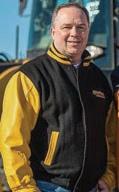
“This acquisition will allow us to focus more on providing a complete service to our customer group.”
The Prairie Water fleet includes machines used for soil preparation, seeding and erosion prevention, as well as tractors, skid steers, sideby-side UTVs, heavy disks, finishing disks and fencing equipment.
“ConTrac would like to
thank Randy Sroka for building such an exceptional business, and we hope to carry on their values,” Karczmarczyk said. “We look forward to building long lasting relationships with pre-existing Prairie Water customers and new clients alike.”
Based in Spruce Grove, Alberta, ConTrac Equipment was founded in 1999. Today, the company supplies machines to the pipeline, homebuilding, land development, roadbuilding
and utilities sectors across Western Canada.
“We’re in pretty much every industry,” Karczmarczyk said.
Alongside rental, the company also sells used machines, which are primarily sourced through its rental fleet.

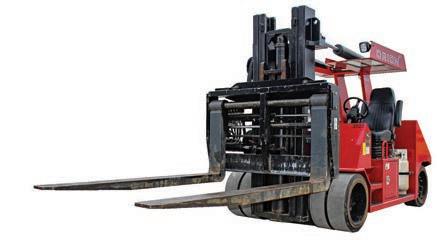

“Our whole business model is that 95 per cent of our fleet is on warranty. When it gets to the end of that, we sell them as mid-life premium used equipment,” Karczmarczyk said.
Michael Karczmarczyk
The Cement Association of Canada has released Concrete Zero, an Action Plan to ensure Canada's cement and concrete industry meets its net-zero emissions target by 2050.
The industry has charted a course towards achieving its goal of 40 per cent emissions reduction by 2030 as part of the Roadmap to Net-Zero Carbon Concrete by 2050, which is a joint government and industry
collaboration.
"Concrete Zero tells the journey we have been on as an industry. It outlines the progress we've made and shows that higher emissions reductions are possible,” said David Redfern, Chair of the Board, Cement Association of Canada.
“Our Action Plan lays the foundation for what we will do next and our role in delivering leading solutions to climate change."
The Canadian cement and concrete industry is also the first to join Canada's Net Zero Challenge, which aims to disclose and verify carbon emission reductions.
To reach net-zero, the industry will focus its efforts on five priority areas, including the elimination of coal and petroleum coke as fuel sources for clinker production. Instead, the concrete industry will increase the use of lower-carbon and alternative fuels, including engineered biomass and green hydrogen. By 2050, 100 per cent of fuel mix will come from non-fossil-based sources.
As well, Concrete Zero includes a plan to reduce the volume of clinker used to produce cement, which will achieve a 1.5 tonne carbon dioxide emissions reduction over the course of the decade.
After 2030, the use of innovative materials, natural pozzolans and beneficiated
waste and recovered materials will increase to meet the reduction goal.
The use of supplementary cementitious materials will also increase in the form of fly ash and ground granulated blast-furnace slag, as will introducing ground limestone, recycled concrete fines, calcined clays, and other new promising materials.

Carbon capture will also play an important role in the Concrete Zero plan. Part of that effort will be to build North America's first commercial deployment of a full-scale carbon capture and storage project at a cement plant by 2030.
The Cement Association of Canada also plans to advocate for performance-based codes, standards and specifications, procurement policies and increased material efficiency in construction.

"Our Net-Zero action plan is ambitious and cannot be achieved by industry action alone,” said Adam Auer, President and CEO of the Cement Association of Canada.
“Working with government, industry, and partners in the design, architecture, and construction industry will be essential for success. Canada's cement and concrete industry are committed to doing our part to help Canada build a better, cleaner future. Working together, we can deliver concrete zero."
WE ARE PROUD TO ANNOUNCE WE ARE OFFICIALLY A BEARCLAW DUMP TRAILER DEALER!


2010 NEW HOLLAND U80B

79 hp, 4WD, Deluxe cab w/Heat/Air Con., 4 forward x 4 reverse speed trans. w/Power Shuttle, Ride Control, NH/FFC Hyd., QC on front loader, Aux. hyd., QA bucket & AMI pallet forks, 3 point hitch, Dual tilt w/ holding valve, Additional rear counterweight $69,900
2007 NEW HOLLAND B95 95 hp, 4 cylinder diesel, cab w/heat and air conditioning, front & rear wiper, Extendahoe, 1.3 yard front bucket, 24” rear bucket, Pilot Controls, 4 speed power shuttle trans., loader aux. hyd., 1050 Hrs, pattern control changer $69,900

2005 NEW HOLLAND DC85 Dozer, 89 gross engine horsepower, 4 cylinder engine, LGP model, 28” grouser shoes, Drawbar, Mechanical suspension seat, Canopy, 124” wide PAT blade, New sprockets & track chains Installed, 3577 hours $69,900
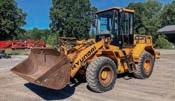
2007 JCB 3CX BACKHOE
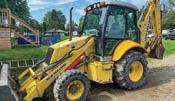



90 hp, 4 cylinder turbocharged diesel, Cab w/heat & A/C, pilot controls, 4 speed powershift trans., Extendahoe, 14x17.5 front tires, 19.5L24 Rear tires, 24” Rear bucket, front pin on bucket $54,900
2004 HYUNDAI HL760-7 Wheel loader, 40785 lb. operating weight, Cummins QSB5.9-C engine with 205 horsepower, 4-speed Powershift transmission, Exterior mirrors, 23.5R25 radial tires, 3rd function Auxiliary hydraulics, 2272 hours showing, 4.25 yard bucket, New decals being installed $54,900
2004 HYUNDAI HL730-7
21384 lb. operating weight, Cummins B3.9C 4 cylinder engine, 125 gross engine hp, 4 forward x 3 reverse speed Full Auto. Powershift trans., 17.5-25 tires, Front/rear fenders, 3rd function aux. boom hyd., ACS hyd. coupler, ACS 2 yd mat. bucket with bolt-on cutting edge, 3647 hours $64,900
2018 HYUNDAI R80CR-9A 65 horsepower, 4 cylinder diesel, Cab with heat and air conditioning, radio, pattern control changer, Dozer blade, 1 and 2 way auxiliary hydraulics, hydraulic quick coupler, hydraulic thumb, excavating bucket, rubber tracks, ONLY 190 Hours $124,900
2013 HYUNDAI R180LCD-9A 43760 lb. operating weight, Perkins 4 cylinder engine with 137 gross hp, Dozer blade, 28” track pads, 16’9” boom length, 8’6” arm length, Aux boom & arm hyd. with 1 or 2 pump flow, Air ride suspension seat, 7” color LCD screen, (3) Power Modes & (2) Work Modes, 4670 hours $119,900
2009 HYUNDAI HL740TM-7A
Tool carrier model w/hyd. QC, Cummins QSB6.7 engine w/ 138 hp, 26680 lb. operating weight, 4-speed Powershift trans., Front/rear fenders, Ext. mirrors, 20.5R25 radial snow tires, 2.5 yd mat. bucket w/ bolt-on cutting edge, 3rd function auxiliary hydraulics, 7553 hours $79,900
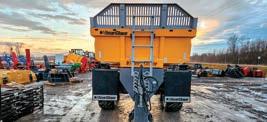
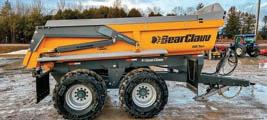
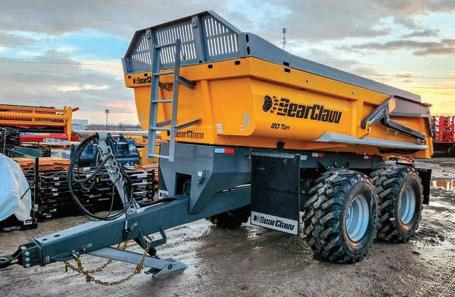
2011 HYUNDAI R16-9 COMPACT EXCAVATOR
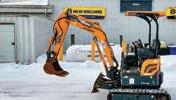
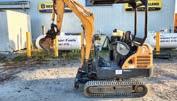

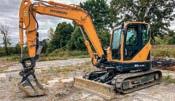
Mitsubishi 17 hp engine, 3640 lb. operating weight, Variable undercarriage width, 9 inch rubber tracks, Mechanical pin grab quick coupler, 18 inch bucket, Auxiliary boom hydraulics, Canopy, Dozer blade with folding wings $21,900
2017 NEW HOLLAND B95B LONG REACH

Backhoe, Tier 3 engine, 97 gross engine hp, Deluxe cab with Heat/Air, Four wheel drive, 4 Speed Power Shuttle trans, 1.3 cubic yard front loader bucket with bolt-on cutting edge, Front loader auxiliary hydraulics, Pilot Controls with selectable control pattern $102,900
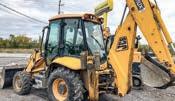
Futura Teeth and adapters are cast from chromium, molybdenum, and nickel to deliver greater strength and durability than any comparable teeth on the market. They feature approximately 20% more usable wear material than other similar systems in the market and 68% of the steel can be used without losing sharpness. That’s Powerful Value. Delivered.
For a limited time, receive FREE Futura adapters when you purchase three complete sets of Futura bucket teeth. See store for details.

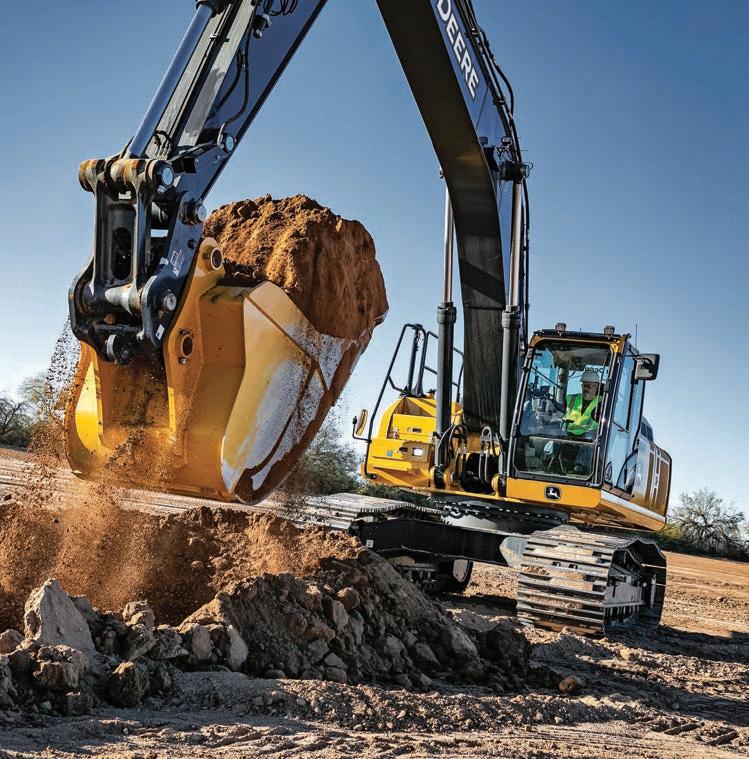
brandt.ca 1-888-227-2638

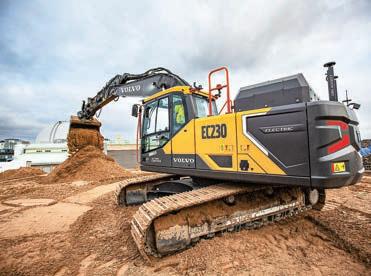
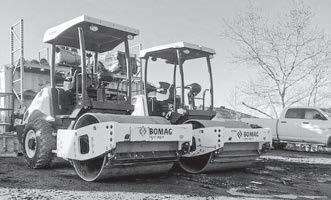
Volvo Construction Equipment will test the capabilities of its EC230 Electric excavator through a pilot project with WM (formerly Waste Management).
WM will test the mid-size 23-ton electric excavator at a WM facility on the East Coast.


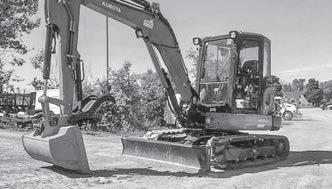
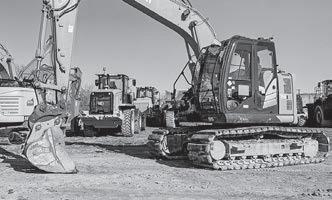
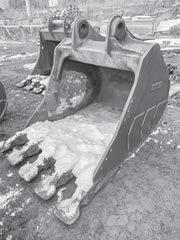
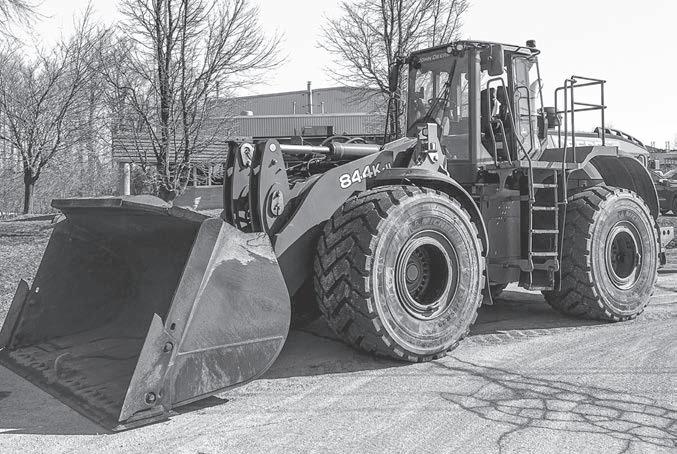
The pilot project will see an EC230 Electric performing the same tasks normally tackled by diesel excavators in waste applications. WM will track data during the project and share feedback with Volvo CE.
The WM partnership kicks off several real-world pilot projects for the 3-ton electric excavator in various applications on the North American power grid.

The pilot project was announced at Waste Expo in Louisiana and ACT Expo in California, where attendees could see an EC230 Electric in person.

“This is the first pilot in North America, but the EC230 Electric excavator has been thoroughly tested by customers overseas, and in each case, it has offered the same performance as its diesel equivalent with the added benefit of no direct emissions,” said Stephen Roy, President of Region North America, Volvo CE. “We’re excited to work with WM on a project that aligns with both of our organizations’ values of being good environmental stewards.”

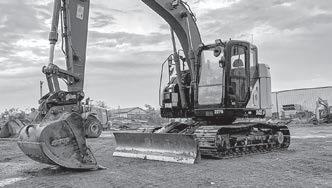
WM’s commitment to alternative fuels
For more than 20 years, WM has been committed to alternative fuel options, including compressed natural gas and electric vehicles as well as other technologies to help reduce overall emissions.
WM has some of the most ambitious sustainability goals in its industry, calling
for a 42 per cent reduction of its overall Scope 1 and Scope 2 greenhouse gas emissions by 2032: a target aligned with the Paris Agreement.
“WM has a long track record of incorporating alternative fuels into our operations, and we’re exploring technologies like electric that support our mission to reduce emissions,” said Bryan Tindell, Vice President of disposal operations at WM.
“We have a longstanding relationship with Volvo CE when it comes to working toward sustainable solutions related to alternative fuels and energy sources. This electric excavator is expected to improve machine uptime and increase productivity, and our pilot could help map out the next steps for implementing additional electric and other sustainable technologies into our heavy equipment fleet.”
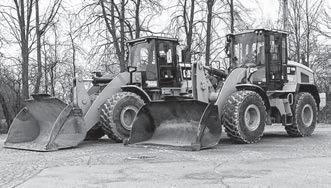
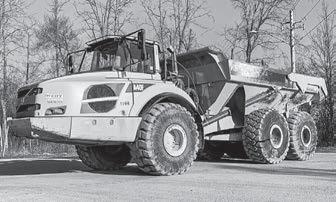
The 23-ton EC230 Electric excavator is a general-purpose machine designed to run in the same applications as a similar-size diesel excavator, including extraction, earthmoving and grading for site preparation, as well as waste and scrap handling.
The electric excavator has the same digging forces and lifting capacities as its diesel equivalent in the Volvo CE lineup, and it supports the same attachments and services.
The main difference is that it is powered by batteries. The lack of an engine results in zero direct emissions, less noise, reduced maintenance and lower total cost of ownership.
When the EC230 Electric excavator becomes commercially available, it will join the Volvo CE six-machine lineup of electric machines.
“Electric construction equipment thus far has mostly been compact models, but to make the kind of progress we want for a more sustainable future, larger machines need to be part of the equation,” Roy said. “Volvo CE is proud to be leading the industry into that future along with sustainability driven companies like WM.”
Volvo CE plans to make the EC230 Electric commercially available in North America in 2024.
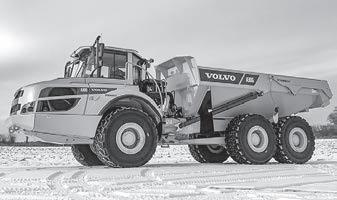
In the days leading up to the grand opening of North Toronto Auction in 2003, a competitor told its founders they wouldn’t last three months.
Today, North Toronto Auction (NTA) is celebrating its 20th anniversary, and that competitor is no longer in the industry.
“I think about that when times are tough, and I need some motivation. So, I thank him for that,” said Matt Rispin, who founded North Toronto Auction with Stuart Ralph and Frank Panza.
In Late April, NTA held an auction to celebrate the 20-year milestone with many of the dealers they’ve partnered with since the start.
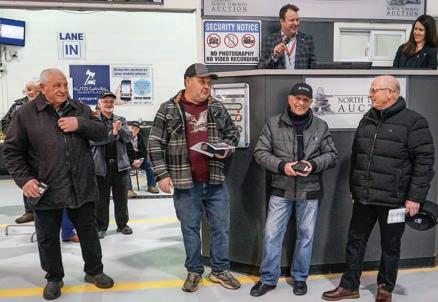
“You get a little bit nostalgic about it. You think about the people and the customers that were with you or the staff and that sort of thing,” Rispin said. “We have some great partners
that have either stuck with us, or we've stuck with them, throughout 20 years”
North Toronto Auction began as a dealer-only automotive auction company in Innisfil, Ontario.

Due to customer demand, the company quickly expanded into public auctions for cars and commercial trucks followed by heavy equipment and recreational items. In September, NTA was acquired by Auto Canada.
Today, the heavy equipment auctions have become a regular monthly event.
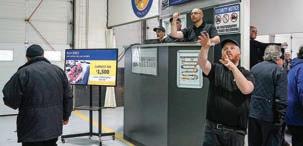

“We find that having the sales at a frequent pace helps a lot of our customers,” Rispin said, who has stayed on with NTA as General Manager.
For the heavy equipment segment, North Toronto Auction has found its specialty in selling machines for governments and utility service companies.
“That has sort of been our niche as far as that remarketing sector,” Rispin said. “In 2007, we were awarded the City of Toronto contract and that's really when our equipment side of the business took off. We've grown with them being one of our top consigners.”

Alongside Toronto, NTA’s equipment contracts now include Hydro One, the province of Ontario and other municipalities of various sizes.
“We felt that whole sector, back 15 years ago, was an area that was sort of being neglected and so that's sort of the area we chose to go into,” Rispin said.
The biggest change in the auction industry for NTA has been the move to online bidding. While NTA has included an online auction component in their business since the start, pandemic restrictions changed how buyers bid on equipment.
“Auctions were hit hard because we deal with surplus, and we deal with live crowds. The surplus went away, and the crowds did as well,” Rispin said.
Fortunately, North Toronto Auction had the online infrastructure in place to move to a digital environment.
“Something we’ve always done is keeping up with that technology and offering those services. When something like a pandemic happens, you're ready to go,” Rispin said. “So, to get through that and to keep trucking along, it's been great.”
Pre-pandemic, an audience of 1,000 people would have 800 bidders on-site and 300 people bidding online. Now, an auction will see 700 people participate online and 300 people attend in-person.
“People are slowly coming back. We've been doing it for a year
and at every sale there's more improvement and demand for it,” Rispin said. “But a lot of people have decided to stay online because we've made it really easy for them to purchase and sell online.”
For Rispin, both in-person and online auctions have their own advantages. The in-person auction gives customers a chance to see the equipment and meet the industry.
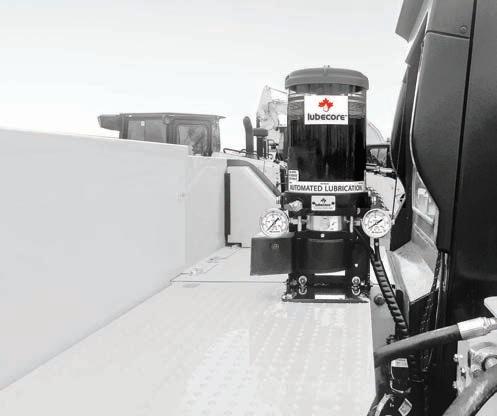
“It's a great networking place and it's exciting,” he said. “There are just some things that some people will look for that that might not be available in the photos. So, people do love it.”
The online auction offers the opportunity to place a bid without leaving the home or office.
“They don't have to take the time away from their everyday jobs to attend an auction. So, there's trade-offs either way,” Rispin said.
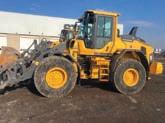
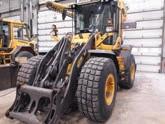
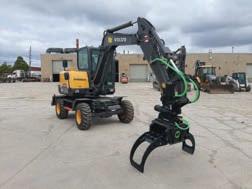
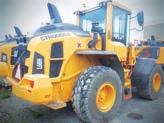
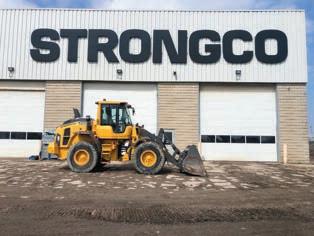

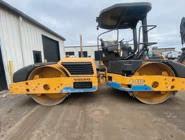





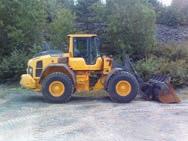
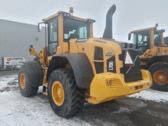
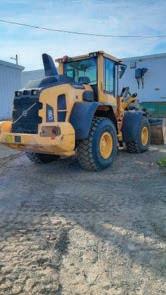
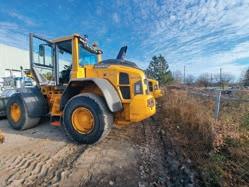




Bobcat’s T7X electric compact track loader has won a 2023 World Changing Ideas Award from Fast Company.
The World Changing Ideas Awards honour sustainable designs, innovative products, social initiatives and other creative projects that are changing the way we work, live and interact with the world.
The Bobcat T7X received multiple Fast Company honours, placing first in the Transportation category, a finalist in the General
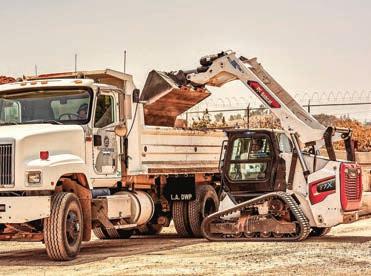



Excellence category and honourable mention in the North America category.
“Innovation is at the core of Bobcat’s legacy. We invented the compact equipment industry 65 years ago with the development of the world’s first compact loader, and we continue to pioneer new products and services to help our customers accomplish more and create a more sustainable world,” said Joel Honeyman, Doosan Bobcat Vice President of global innovation. “There is always more work to be done and contributions to make within the industry.
"This is why Bobcat continues to invent new concepts, create new equipment, build smart technologies and develop innovative solutions to empower customers and lead the industry forward.”

The all-electric T7X is the first compact track loader deisgn to eliminate all hydraulic components and emissions.



The T7X is fully battery powered and designed to deliver a smaller carbon
footprint and a quiet jobsite experience. The CTL was also created to outperform its diesel machine counterparts.

The 2023 Fast Company World Changing Ideas Awards showcased 45 winners, 216 finalists and more than 300 honourable mentions — with health, climate, energy and Artificial Intelligence among the most popular categories.
A panel of Fast Company editors and reporters selected winners and finalists from more than 2,200 entries across urban design, education, nature, politics, technology, corporate social responsibility and more.
“It’s thrilling to see the creativity and innovation that are so abundant among this year’s honourees,” said Fast Company editor-inchief Brendan Vaughan.
“While it’s easy to feel discouraged by the state of the world, the entrepreneurs, companies and nonprofits featured in this package show the limitless potential to address society’s most urgent problems.”


Metso Outotec is changing its name to Metso Corporation.
At the company’s Annual General Meeting in May, the name change proposed by the board of directors was approved.

“After the successful integration of Metso and Outotec, we will focus on growing a strong unified Metso company and brand,” said Pekka Vauramo, President and CEO of Metso.
“We have combined two valuable companies into one strong Metso. Our focus is clear: we continue enabling sustainable modern life and transforming the industry with a clear strategy and strong culture, supported by a name that is short yet established and well recognized among all our stakeholders. Services are an extremely important part of our business, requiring a strong name.”
In 2019, Metso Minerals and Outotec agreed to merge to create Metso Outotec, a company that will deliver process technology and equipment to the minerals, metals and aggregates industries.
The change of the parent company name Metso Corporation is effective May 4, 2023, but globally the name
change will be implemented in a phased manner. The visual identity of the company remains unchanged, but the new name is reflected in the company logo.
Outotec continues as a product brand and carries significant value as the name of some key technologies and products.
At the AGM, the board of directors was authorized to decide on the repurchase of an aggregate maximum of 82,000,000 of Metso Outotec’s own shares, which corresponds to approximately 9.9 per cent of all shares. However, the company together with its subsidiaries cannot at any moment own more than 10 per cent of all the shares of the company.
The AGM also elected nine members of the board of directors. Kari Stadigh was re-elected as Chair, Klaus Cawén as Vice Chair. Brian Beamish, Terhi Koipijärvi, Ian W. Pearce, Emanuela Speranza, and Arja Talma retained their roles at board members, while Niko Pakalén and Reima Rytsölä were elected as new board members.
The board’s term of office will end at the closing of the Annual General Meeting 2024.
While Case Construction Equipment and New Holland Construction share the same parent company, “they too often competed,” according to Scott Wine, CEO of CNH Industrial.
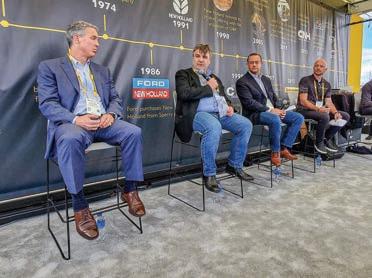
However, the company’s recent demerger between on-highway and off-highway machinery will allow the two OEMs to cooperate rather than compete.
In January 2022, the on-highway segment of CNH Industrial was spun-off into the separate company Iveco Group. The split has allowed CNH Industrial, parent company of Case and New Holland, to focus solely on construction and agricultural equipment.
“That business consumed a lot of our capital, and we couldn't always invest as much as we wanted to invest in construction. We generated over $1.5 billion of cash last year, and we can spend a lot more of that expanding the portfolio for both New Holland and Case,” said Scott Wine, CEO of CNH Industrial. “I will tell you that anybody that asks if we're staying in construction, the answer is a resounding ‘yes’.”
As part of the enhanced focus on construction, New Holland showcased
its equipment at ConExpo for the first time in 12 years.
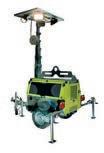
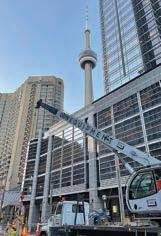
At the show, New Holland unveiled the E15X mini excavator - its first electric machine, the C330 vertical lift compact track loader and the C314 mini track loader.
“With New Holland, there is an incredible future of profitable growth. The product portfolio is expanding, and the brand is really strong,” Wine said. “And our distribution partners have been excellent through a period of time where we probably weren't the best owners, or the best investors, in our own construction business.”
Cooperation
New Holland was founded in in 1895, while Case Construction Equipment’s history dates back more than 180 years. Wine explained the two company’s histories as separate entities meant they often would compete in the same markets. Going forward, each company will focus its effort on different market segment in different ways.
“Now that’s the difference between competing to lower margins, versus cooperating to gain market share. I think it positions us really,
really well for what we can accomplish over the next several years.”
Cooperation also exists between CNH Industrial’s agricultural and construction machinery. Wine explained the construction segment shares commonality with its agriculture equipment brands, which reduces costs and improves the opportunity for higher returns.
“Much of the components that goes into a tractor are the same that go into wheel loaders,” Wine said. “So, we share engineering resources, we share supply chain resources. In some cases, we share plants.”
New Holland is also increasing its investment in manufacturing. At its skid
steer and CTL plant in Wichita, Kansas, the company has added a third production line and hired more than 150 new employees. As well, CNH Industrial is expanding its dealer network in North America specifically for the New Holland brand.
“And of course, we are investing on the electrification sides to support the needs of our customers. So, investment is the key," said Leandro Lecheta, Head of Construction North America for CNH Industrial. “We are aggressively investing in the brand to make this business grow, taking into consideration our customer-first mission.”
Positive outlook
Pre-pandemic, CNH In -

dustrial sold about 250,000 units in Canada and the United States. Despite a dip in sales in 2020, sales increased to 275,000 units in 2021 with similar numbers recorded last year.
“This is our forecast right now, a kind of a flattish market. But in a very good level, higher than what we saw pre-COVID,” Lecheta said. “From the three to five years horizon, we don't see these markets having some major fluctuations.”
For New Holland’s compact equipment, Lecheta is confident about the industry in North America. Although higher interest rates may stall residential construction, he explained compact equipment use is increasing for landscaping,
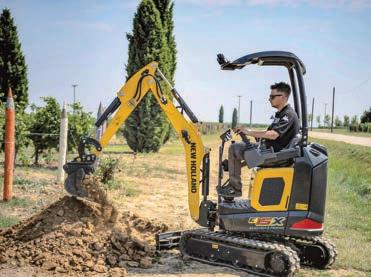
general construction support and in agriculture.

“We still see a very strong market for the CTLs, for the skids and especially for the mini excavator. We believe it's going to be the core product. We're going to see these markets evolving very, very soon,” Lecheta said.
Stefano Pampalone, President of Construction for CNH Industrial, added the post-pandemic investments in infrastructure help to build upon CNH Industrial’s positive momentum.
“We have a healthy portfolio, an enthusiastic network ready to take products and customer that have jobs to be done,” Pampalone said.
“So, I think our outlook is definitely positive.”
Cat is expanding its material handler lineup with the new MH3050, which features a 48-tonne operating weight and an 18-metre maximum reach.
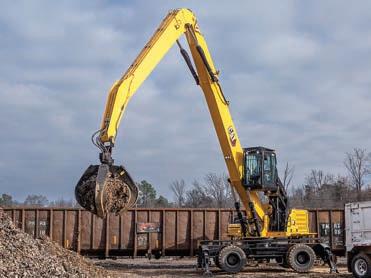
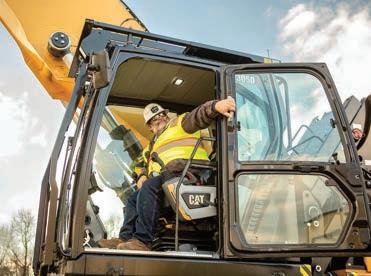
The machine is equipped with an advanced electrohydraulic system that optimizes the balance of power and efficiency, improving cycle times to handle more material in the same amount of time.
The next generation material handler is powered by a 258 hp Cat C9.3B engine and able to operate on up to B20 biodiesel. The engine meets Stage V and Tier 4 Final emissions standards, and the maintenance-free aftertreatment system lowers operating costs and maximizes uptime.
Fine-tune power requirements to the task
at hand with the choice between Power, Smart and Economy modes, lowering fuel consumption without sacrificing machine performance.
Boom and stick offerings combine to provide up to 18 metres of reach, allowing operators to move more material without repositioning the machine.
The MH3050 also offers high swing torque to quickly move material. Via SmartBoom, the boom freely travels up and down without using pump flow, which enables the operator to focus on stick and grapple control for a more fuel-efficient cycle. A range of attachments are available increasing operating flexibility as well as an optional 25 kW generator is available for magnet applications.
The Cat MH3050 material handler is equipped with several tech features as standard, including:

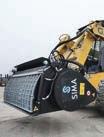
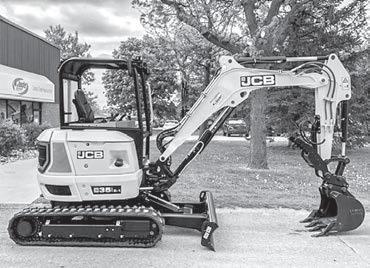
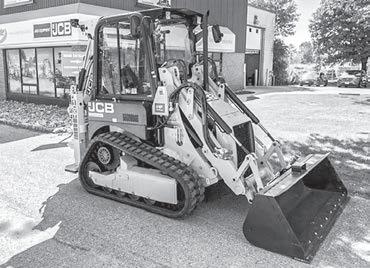
· E-fence prevents the machine from moving outside operator defined envelopes
· Cab Avoidance stops any potential contact between the attachment and the cab






· Cat Payload helps to achieve precise load targets to improve operating efficiency. The operator can pick up a load of material (with grapple or clamshell attachments) and get a real-time weight estimate without swinging.
· Operator ID stops the machine from unauthorized use by requiring a PIN code to start the engine.
· Product Link captures operating data such as location, hours, fuel usage, productivity, idle time, maintenance alerts and fault codes, which can be remotely accessed and tracked to boost fleet management efficiency

To enhance visibility, the material handler features large tempered glass windows with small pillars on the reengineered cab design. As well, right-side and rear-view cameras, with the option to upgrade to 360-degree vision, further improve visibility. For low light operation, the machine is equipped with 1,800-lumen LED lights on the chassis, boom and stick, offering greater safety and full visibility while operating in the dark.
A ground-level shutoff switch stops all fuel to the engine and shuts down the machine. Boom and stick lowering check
valves prevent reverse oil flow in the event of unexpected loss of hydraulic pressure to keep the front linkage securely in place.
Premium cab
The MH3050 material handler is equipped with a premium cab that includes joystick steering to improve forward visibility, legroom and ease of cab entry. All controls are positioned in front of and within easy reach of the operator to avoid unnecessary movements. A large, 254-mm high-resolution touchscreen monitor with jog-dial offers easy navigation of operator controls. The hydraulic cab riser, with new dampening system, improves all-around visibility and provides cushion from external vibrations.
Extended filter change intervals
The new hydraulic oil filter improves filtration and increases change intervals to 3,000 operating hours, more than 50 per cent longer than previous designs. As well, new anti-drain valves keep the hydraulic oil clean during filter replacement.
Fuel filter change intervals are now coordinated to 1,000 operating hours to reduce maintenance requirements. Operators can track filter life and maintenance intervals on the in-cab high-resolution monitor.
A standard autolube system simplifies maintenance by automatically keeping the machine greased from the swing bearing and cab riser to the stick end.
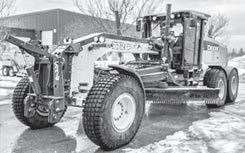
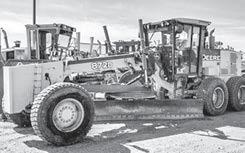
Eliminating the need for operator interaction, the cooling fan features a standard automatic reverse function to keep the cores clean, maximizing machine uptime.
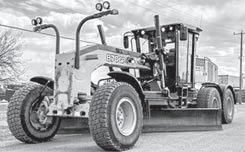
Windmill Garden Centre & Landscaping have been in business for nearly 30 years, with many long-term employees. Since Timm McLean purchased the business just over a year ago, they have continued to grow. They offer full-service landscape design and construction which includes hardscaping, softscaping, shoreline restoration, retaining walls, irrigation, interlock walkways, decking, patios, driveways, outdoor lighting, and a garden centre in Oro-Medonte, Ontario. They are servicing Simcoe County and surrounding areas. “We do a lot of residential waterfront estates and new home builds between Orillia and Barrie, like Shanty Bay and Eight Mile Point areas. We will also do
small jobs too,” stated Timm. What Timm and the Windmill team have perfected to do, is provide top-quality service and products, yet get the job done quicker than most of their competition. Timm has also given Windmill a fresh new look, including wraps on their vehicles/trailers, new logos, updated website and signage.
When asked why Bobcat® machines? “The Bobcat product lineup fits our business the best. The Bobcat E88 compact excavator is great for lifting our larger boulders/ stones for waterfronts. Bobcat machines have very little downtime. A dozen people operate our machines,” stated Timm. 20+-year Windmill employee and Bobcat machine operator, Graham Norman added “Bobcat machines are user-friendly, standard controls are easy to operate, low maintenance, a comfortable ride and I have never broken one.” Esther Langman, a 16year employee exclaimed, “I tell you; the Bobcat T630 compact track loader is a breath of fresh air. I get my work done so much faster than the other brand machine I was using because the standard hand and foot controls are easier and smoother to operate with.” Esther also stated, “my niece Miceala Powers is really great at operating
YOUR LOCAL AUTHORIZED BOBCAT DEALERS
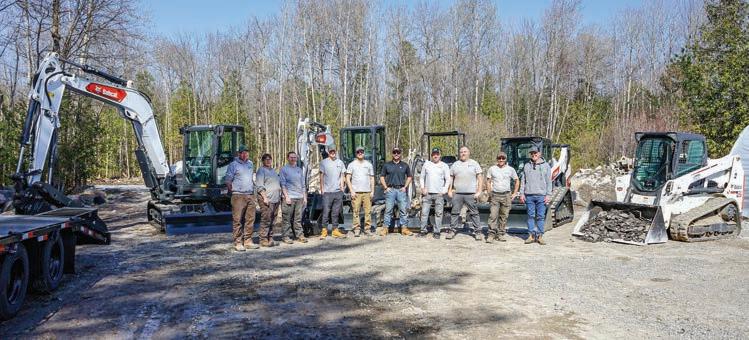
BARRIE Bobcat of Barrie 705-726-2228 oakenequipment.ca
GREY BRUCE
Bobcat of Grey Bruce 519-372-9100 bobcatoftc.com
PARRY SOUND
Bobcat of Parry Sound Ltd.
705-342-1717
bobcatofparrysound.com
TORONTO WEST Bobcat of Toronto 416-679-4172 oakenequipment.com
BRANTFORD Bobcat of Brantford 519-752-7900 bobcatofbrantford.com
HAMILTON Bobcat of Hamilton 905-643-3177 bobcatofhamilton.com
PETERBOROUGH
Bobcat of Peterborough
705-748-9119
bobcatofpeterborough.com
THUNDER BAY Equipment World Inc. 807-623-9561 bobcat-tbay.com
CASSELMAN Bobcat of Ottawa Valley 613-764-2033 bobcatov.com
KITCHENER
Bobcat of Tri-Cities Ltd. 1-866-214-3939 bobcatoftc.com
STRATFORD
Bobcat of Stratford 519-393-6040
bobcatofstratford.ca
SAULT STE. MARIE Bobcat of Sault Ste. Marie 705-949-7379 bobcat-ssm.com
CORNWALL Bobcat of Ottawa Valley 613-932-2034 bobcatov.com
LONDON Bobcat of London 519-455-4900 bobcatoflondon.ca
STRATTON Stratton Equipment 807-483-5505 strattonequipment.com
WINDSOR Bobcat of Windsor 519-737-0120 oakenequipment.ca
the Bobcat E20 compact excavator. She picked it up in seconds!”
“Bobcat of Barrie is easy to deal with and always has parts in stock. Jake Evans, sales specialist for Bobcat of Barrie has been great to deal with. He is a really upbeat and positive person. He makes everything very clear. Although Jake just started handling our account, we have been dealing with Bobcat of Barrie for 13 years. I wouldn’t hesitate to recommend Jake Evans, Bobcat of Barrie, and Bobcat machines for your next purchase.”
Thanks Timm.
COURTICE Bobcat of Durham East Ltd. 905-404-9990 bobcatofdurhameast.com
MUSKOKA
Bobcat of Muskoka 249-390-7000 oakenequipment.ca
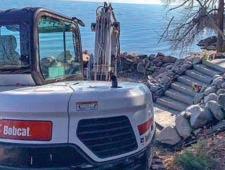

SUDBURY McDowell B Equipment Ltd. 705-566-8190 bmcdowell.com
FRANKFORD John’s Equipment 613-398-6522 johnsequipmentsales.com
OTTAWA
Bobcat of Ottawa Valley 613-831-5166 bobcatov.com
TORONTO EAST Bobcat of Toronto 416-679-4171 oakenequipment.ca
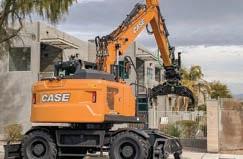
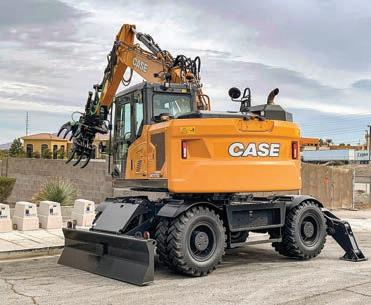
Case Construction Equipment is reentering the wheeled excavator market in North America, with five models expected to be released by the end of the year.
With numerous large projects rolling out in the United States, the new machines are designed to answer the need for versatile excavators that can work around existing infrastructure, such as roads and bridges or in urban areas.

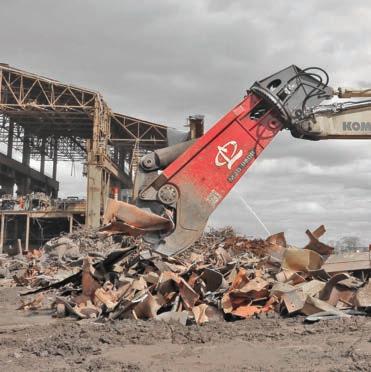
“If you think about the wheeled excavator industry, it is just a fraction of the crawler excavator industry,” said Diego Butzke, Product Manager at Case Construction Equipment.
“It is an industry that can grow more, some customers are asking and talking about it. So, we want to be part of this market to help grow the industry.”
Since the machines are wheeled, they’re less likely to damage pavement, and they can travel between jobsites without a trailer.
“They’re self-deployable. So, it not only helps them with more versatility, it helps with mobility. Their operating costs are lower because they're adopting a new solution,” Butzke said.
At ConExpo, Case showcased the new WX175E SR. The wheeled excavator dis -




played at the show weighed 20 tonnes and operates at a rated 173 hp at 2,200 rpm. The short radius design allows it to work easily up against structures, existing infrastructure and along roadsides while taking up a minimal space. The machine can travel at speeds up to 35 km per hour.
The wheeled excavators feature a load sensing hydraulic system that allows for multi-functional operation and precise machine movements, as well as proportional auxiliary hydraulics that enable smooth, precise control of attachments. The optional Fine Swing control increases precision with less material spillage, and Power Boost provides an instant increase in power when needed.
The Case wheeled excavators are also equipped with engine auto-idling and shutdown to save fuel, reduce noise and engine hours as well as reduce exhaust emissions. An ECO gauge also monitors engine utilization.
An electronic reversible fan provides automatic engine cooling while a self-cleaning mode eliminates dust and debris from the engine compartment.
The four-wheel hydrostatic drive ensures greater traction, even in rough conditions, while Ride Control provides a smooth ride, increased comfort and less material spilled from the bucket.
Joystick steering enables easy maneuvering and enhanced productivity.
“The feature I liked the most is joystick steering. If you don't want to use the steering wheel, you can actually use the joysticks to steer,” Butzke said.
The Case Auto Brake feature allow work to begin immediately after stopping the machine from travel.
“If you need to stop to do some digging or material handling, the machine automatically brakes the wheels. So, you can safely do that, as the machine is not going to move,” Butzke said.
The wheeled excavators are equipped with a two-piece boom or an optional mono boom. Butzke explained the two-piece boom is another feature included to enhance mobility.
“You can get much closer to the machine to do material handling. You can grab stuff that is literally at your feet,” he said.
Case Max View
The Case Max View camera system provides the operator with a full 360-degree field of view with intelligent moving object detection technology and warning system around the machine in any weather, day or night.
“If someone walks by on the side or the rear or the front of the machine, there is radar that follows that person. And it points out where that moving object is located,” Butzke said.
Pettibone’s X-Series telehandler lineup has reached the 15,000-pound lifting class (6,800 kg) — for the first time — with the introduction of the Extendo 1544X telehandler.
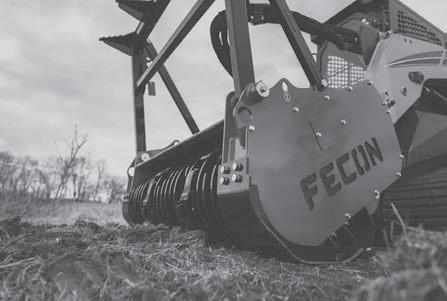
The added load capacity makes the new Extendo ideal for material handling tasks in highway construction, pipe yard applications and for extended load requirements on traditional building sites.

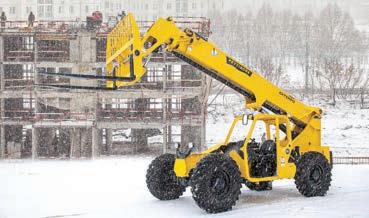

The 1544X is powered by a 117 hp Tier 4 Final Cummins QSF 3.8 turbo diesel engine. The engine is mounted on a side pod allowing easy accessibility to components and daily service checks, while still allowing for curbside visibility and a ground clearance of 48 cm. The Dana VDT12000 Powershift transmission offers three speeds, forward and reverse.
The 113-litre fuel tank provides volume for a full day’s work at 100 per cent load, and foam-filled tires are standard.



Built on Pettibone’s nextgen X-Series platform, the Extendo 1544X offers a maximum lift height of 44 feet (13.4 metres), a maximum forward reach of 8.8 metres
and a maximum load capacity of 6,800 kg. To improve boom strength while reducing weight, the X-Series platform is built with formed boom plates. The design also minimizes boom deflection for better control and accuracy when placing loads. A significant boom overlap provides smoother operation and reduces the contact forces on wear pads to extend service life. An external, bottom-mounted extend cylinder further reduces the load on wear pads by up to 50 per cent.
Pettibone’s hydraulic circuit delivers controllability while enhancing efficiency and cycle speeds. Cylinder cushioning dampens the end of strokes, while both extending and retracting, to avoid the wear and tear of hard, jarring stops.
The 1544X uses a single lift cylinder that improves operator sight lines and has twin hydraulic lines for tilt and auxiliary plumbing.
The drivetrain and axles are optimized to provide more tractive effort with minimal tradeoff on topend speed. Built for use on rough terrain, the machine offers full-time four-wheeldrive with a limited-slip front-axle differential.
Tight-steer-angle capability provides an efficient turning radius.


The X-Series operator cab maintains Pettibone’s standard features, including ergonomic seat, pedal, joystick and steering-wheel positions, while optimizing lines of sight in all directions.
An analog/LCD gauge cluster comes standard, and an optional 18-cm digital display with an integrated backup camera is also available. The cab also offers enhanced climate control, flat bolt-in glass, a split-door design, an openable rear window, lockable storage under the seat, and water-resistant components for easy interior washdown.
All-steel fuel and hydraulic tanks are built to resist damage, and the lockable fuel-fill is in a clean, accessible location. Other built-in features include split-system electrical circuit panels and heavy-duty bright LED lighting.
The new Extendo 1544X comes standard with X-Command, a Pettibone telematics program that offers real-time access to machine data.
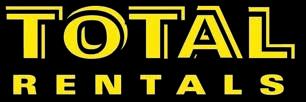
Hitachi Construction Machinery Americas has unveiled the new ZX210LC-7, one of 13 construction excavators in its new Dash 7 series.
The 22-tonne excavator has a maximum dig depth of 6.67 metres and a bucket breakout force of 35,520 pounds.

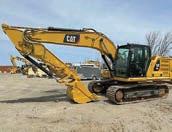
Targeting the most popular segment of the excavator market, the new machine is designed to target earthmoving, material handling, demolition and underground excavation.
“The ZX210LC-7 builds on the success of the award-winning ZX210LC-6 HP introduced last year. We have focused on fine-tuning and enhancing the core capabilities of the ZAXIS7 excavators to maximize efficiency, so you get more for less,” said Patrick Baker, Product Manager, medium and large excavators, for Hitachi Construction Machinery Americas.
The next generation TRIAS III hydraulic system reduces fuel consumption while optimizing performance. As well, the three-pump system provides quick response to all control inputs while minimizing hydraulic losses. A new arm roll-in metering control valve allows hydraulic pump power to be reduced when the arm is operated with a low load. When digging, the roll-in metering control valve reduces hydraulic pressure loss to the tank. This decreases the pump power needed for digging operations, which improves fuel efficiency.
The ZX210LC-7 offers a variety of settings that increase the excavator’s versatility. Attachment/arm priority can be adjusted on the monitor to match the attachment or the operator's preference. When the attachment and arm are operated at the same time, the operator can adjust whether the speed of the attachment or the arm should be prioritized.
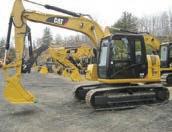
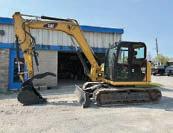
The operator is also able to adjust boom raise priority. This can tailor the machine to do everything from truck loading to heavy digging.
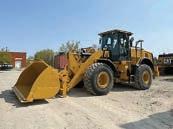
The Hitachi ZX210LC-7 is powered by a 164-hp Isuzu engine. It uses a durable diesel oxidation catalyst (DOC) and selective catalytic reduction (SCR) aftertreatment. The engine features work modes to match available power to jobsite conditions, and an auto idle system, with auto shutdown control, prevents wasted fuel.
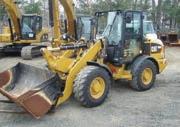
The new Dash 7 machine includes a larger cab with increased head clearance. As well, a one-touch adjustable air suspension seat is synchronized to move with the console. Hitachi has also reduced noise in the cab by increasing the thickness of the rear glass. Improved airtightness of the cab keeps the dust out, even when the air conditioner is started.
Four fluid-filled elastic cab mounts reduce vibration when travelling. A 20-cm anti-glare LCD monitor provides visibility, even in bright surroundings.
Low-effort pilot controls reduce operator strain. For convenience, switches have been collectively installed on the right side with easy access to the most frequently used functions.
For panoramic visibility, Hitachi created its Aerial Angle peripheral vision camera system. It provides a wide 270-degree bird’s-eye view of the machine’s immediate environment. A rear-view camera allows the operator to see the area right below the counterweight.
The Hitachi ZAXIS-7 excavators feature
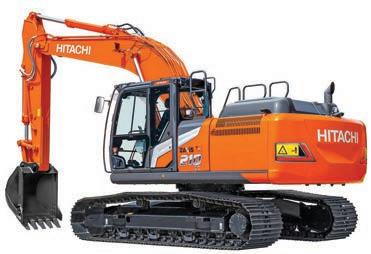
enhancements to critical components such as the undercarriage and boom. On the undercarriage, an anti-mud-compaction lower roller design helps prevent mud from entering and damaging the oil seals. The upper and lower rollers also feature improved idler sealing. A track undercover protects the joint from potential damage.
The ZX210LC-7 features a strengthened boom end and foot.
For durability, the bushings are installed in the brackets at the boom end and the boom foot.
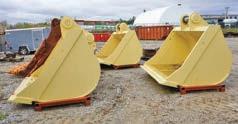
To boost uptime, an inner element of the engine air filter protects the engine from dust while cleaning the outer element. The air conditioner is also protected with a sealed internal filter that prevents intrusion of dust into the air conditioner unit.
ConSite
Using telematic tools to monitor machine health helps boost uptime. ConSite remotely monitors operational status and alerts owners and operators to upcoming maintenance needs.
“ConSite OIL actively checks engine and hydraulic oil, along with other parameters, so you can see a problem before it's even a fault code. This increases operator uptime,” Baker said.
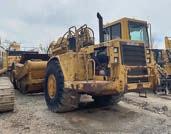
ConSite Air allows the excavator to be diagnosed remotely. It also allows remote updates of the software.
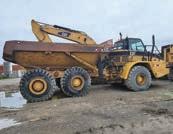
The servicing dealer can remotely diagnose issues that may arise, leading to increased uptime. A ConSite response team is on standby to resolve issues as they emerge.

An Acrow modular steel bridge has been installed at the junction of Autoroutes 520 and 13 in Montréal, Quebec.
The modular bridge is providing access for relocated utilities during the project to reconstruct the Autoroute 520 overpass.
Autoroute 13 is a major north-south freeway in Montréal and the main link to Laval, Quebec, the third-largest city in the province.
At the interchange with Autoroute 520, the six-lane route is heavily travelled, making a rapid installation of the temporary structure
a priority and Acrow’s modular steel structure an ideal solution.
The Acrow bridge was purchased by the Ministère des Transports et de la Mobilité durable (MTMD) and measures 57.91 metres long with an interior width of 3.96 metres and a wooden deck to allow access for maintenance crews.
“The components that make up our Acrow 700XS panel bridging system are extremely versatile,” said Gordon Scott, Vice President Business Development and Operations for Acrow Canada. “Though most often used
for vehicle or recreational applications, this project is just one example of many that show Acrow’s easily assembled and installed bridges are adaptable to many different applications.”
The bridge was assembled and launched in a single weekend with minimal traffic disruption. The structure will support the utilities for the duration of the overpass reconstruction, which is expected to last two years. The bridge will then be disassembled and stored for use on future MTMD projects.
The contractor on the project is Con -
struction Génix, with design engineering through a joint venture consortium between EXP and WSP.
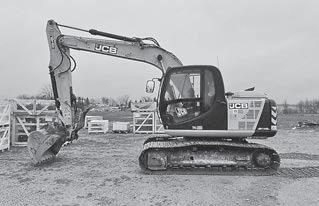
“We are delighted to have been chosen to be a part of this major project to upgrade Québec’s transportation infrastructure,” said Benoit Forget P. Eng, Business Development Manager for Québec and New Brunswick at Acrow Canada.
“Our modular steel bridges are reliable, cost-effective solutions that can help enable accelerated construction for both planned and emergency projects.”

MaxiMetal has delivered the first of 10 electric utility trucks to Hydro Quebec.
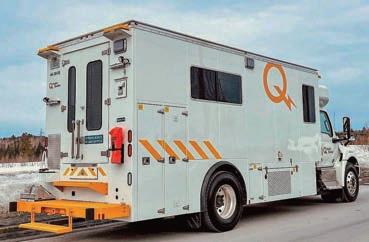
The new walk-in utility vehicle is based on an International eMV electric truck chassis and features an electric drive motor provided by Hydro Quebec subsidiary, TM4, and a battery range of more than 215 km.
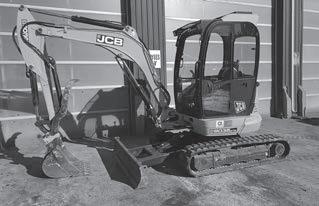
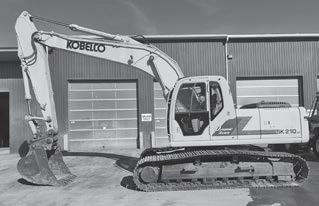

“Decarbonization has become a major priority for our customers, and we are excited to expand our product offerings with these new electric utility vehicles,” said Christopher Sapienza, MaxiMetal’s Director of Sales and Marketing. “There are now several options for electric truck chassis in the market, making it possible for us to design and build solutions tailored to our customer’s needs. Hydro Quebec is the perfect customer for us to begin collaborating with on these new electrified products.”
Hydro Quebec's MaxiMetal walk-in service truck model features a 6.1 metres custom-designed service body including heat and air conditioning along with a severe-duty polyurethane insulation package for extreme climates.
The truck upfit will include gear lockers, tool chests and workbenches, as well as a nose-cone and cab cut-out design for direct access to the service area without having to exit the vehicle. The truck design has been in development
for 15 months to ensure they meet their operational goals.
Hydro Quebec’s power production spans 62 generating stations, more than 33,700 km of high-voltage lines, and more than 106,000 km of distribution lines throughout the province.
While providing electricity to the entire province, the company also exports more than 35 TWh per year to the northeast United States.
To maintain the facilities and the grid, Hydro Quebec operates nearly 10,000 pieces of equipment across 35 fleet garages.
“Our organization has grown substantially in recent years, and the trajectory of our growth will only continue, requiring additional linesman and network maintenance staff who will need service vehicles above and beyond our fleet replacement units,” said François Barrette, Director of Transportation Services for Hydro Quebec.

“We have been involved in the research and development of electric vehicles for 30 years, and we are proud to have the opportunity to integrate the International eMV commercial truck chassis in the production of our new electric walk-in utility vehicles. Our goal is to electrify and decarbonize every time we have an opportunity to do so, in every segment of our fleet.”
The first two electric
Maximetal utility trucks went into service at Hydro Quebec this spring. The company will provide eight additional units in the fall, with the expectation all 10 units will be in service before the end of the year. Feedback from the teams will be used to optimize the truck’s design before production of the nine additional units is completed and delivered by the end of 2023.

Guay is expanding its crane fleet with the addition of three 700-tonne Liebherr LR
1700-1.0 crawler cranes.

With the new cranes, Guay is meeting the growing demands for lifting capacity and hoisting height for erecting wind turbines in Canada.
The 700 tonne cranes will be the most powerful Liebherr crawler models in the company's fleet.


"We are seeing a strong increase in demand for new wind farms in our market. The government is investing large sums in green energy to meet the growing demand,” said Guay Executive Vice President Guillaume Gagnon. “We need to invest in larger crawler cranes as wind turbines get heavier and taller."

The new Liebherr cranes will reinforce the Canadian crane specialist's fleet and deliver the highest hoisting heights in its crane roster. While Guay plans to mainly use the LR 1700-1.0s on wind farms, the cranes will also be used for construction work.
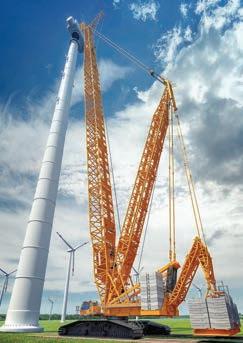
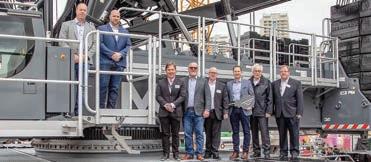
"We will now be able to erect wind turbines up to 165 metres in height and the maximum hook height of 196 metres will enable us to work on tall buildings," Gagnon said. "After completing our research, the high lifting capacity and small footprint proved to be the perfect combination for us."
The LR 1700-1.0 from Lieb-
herr combines the benefits of economical transport in the 600-tonne class with the performance of lattice boom cranes in the 750-tonne class, as well as all innovations featured in Liebherr’s crawler crane developments from the last few years, such as VarioTray and V-Frame. VarioTray is a small counterweight frame that can be quickly unbolted. This eliminates the need stacking and unstacking of counterweight plates.
The V-frame ballast system is a hydraulically adjustable folding frame that enables the ballast radius of the LR 17001.0 to be adjusted between 13 and 21 metres.


"The V-Frame increases the crane’s capacity and flexibility to do all the work we have planned,” Gagnon said. “VarioTray saves us time when working on wind power projects because we only need a lot of counterweight to erect long boom configurations. We have been working with Liebherr for a long time. We like the fact that Liebherr continually creates innovations that drive the industry forward."
Guay is one of the largest privately owned crane companies in Canada with more than 20 outlets in Quebec.
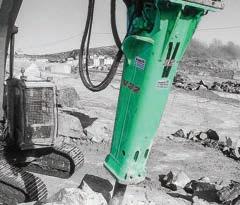
Next year, Guay will celebrate its 60th anniversary.
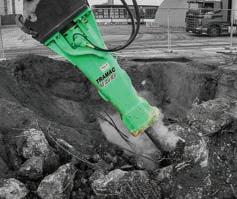

ALBERTA
Liftboss JCB
Calgary: 403-301-0041
Edmonton: 780-474-9900 liftboss.ca
BRITISH COLUMBIA
Williams JCB Surrey: 604-930-3316 williamsjcb.com
Better? It’s something we all strive for. But to be better you must be efficient. Be productive. Be versatile. Be dependable. And you need equipment that supports you every step of the way, no matter how big or small the task. Because good enough is never good enough.
Check out our full line of JCB products at your local dealer or visit JCB.com today.
NEWFOUNDLAND

Harvey JCB

Corner Brook: 709-639-2960
St. Johns: 709-738-8911 harveyco.ca
ONTARIO
Delta JCB
Dunvegan: 613-527-1501


Renfrew: 613-432-4133
Winchester: 613-774-2273 deltapower.ca
ONTARIO
Moore JCB
Toronto, York & Peel
Region: 416-747-1212 moorejcb.com
QUEBEC
A.L.P.A. Equipment
Bas-Saint-Laurent : (506) 735-4144

Gaspésie : (506) 826-2717 alpaequipment.com
ONTARIO
Advance JCB
Waterloo: 519-742-5878
Harriston: 519-510-5878 advanceequipment.net
NEW BRUNSWICK
A.L.P.A. Equipment
Edmundston : 506-735-4144
Balmoral : 506-826-2717




Fredericton : 506-452-9818
Moncton, N.B. : 506-861-2572 alpaequipment.com
NOVA SCOTIA
A.L.P.A. Equipment
Truro : (902) 897-2717 alpaequipment.com
D&W Group Inc.

Doughty & Williamson
Jarvis: 519-587-2273
Brant Tractor Burford: 519-449-2500
Redtrac International
Vineland: 905-562-4136 dwgroup.ca

Fulline JCB

Glencoe: 519-287-2840 fullinefarm.com


Hub International Equipment Ltd.
Lindsay: 705-324-6136 Port Perry: 905-982-1500 hubinter.com
Jade Equipment
Simcoe County and Districts of Parry Sound & Muskoka 705-325-2777 jadeequipment.com
John’s Equipment Sales Frankford: 613-398-6522 johnsequipmentsales.com

North Rock JCB North Bay, Sault Ste. Marie, and Sudbury: 705-897-7369 northrockrentals.com
NEW! NEW!

ReadyQuip Sales & Service Ltd.
Timmins: 705-268-7600 readyquip.com
WPE Landscape Equipment - JCB






















Hamilton/Halton: 905-628-3055 wpeequipment.ca
PEI
A.L.P.A. Equipment (506) 861-2572 alpaequipment.com
Bossé Quebec Inc.
Desmaures: 418-878-2241 Saint-Augustin-debosse-frere.com
Moore JCB Montreal: 514-333-1212 moorejcb.com
SASKATCHEWAN & MANITOBA
Westcon JCB
Regina: 306-359-7273
Saskatoon: 306-934-3646
Winnipeg: 204-694-5364 westconjcb.com
SHERRY BARKER - CE BARKER
“The best feature of our JCB equipment is less downtime.”


















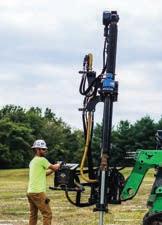
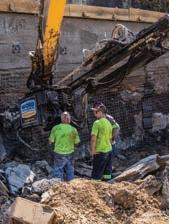
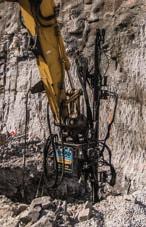
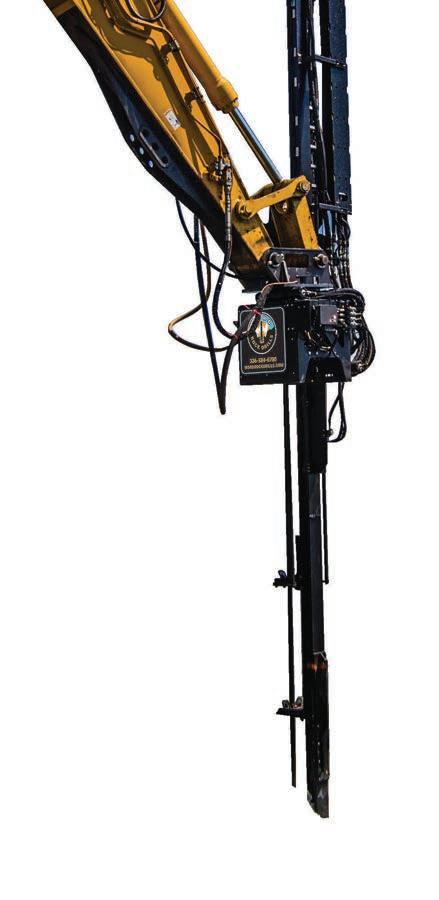

Built Robotics has developed the first fully autonomous piling machine to tackle utility-scale solar foundations.

Using the Built Robotics RPD 35 autonomous piling machine, solar farms can be constructed up to five times faster than with traditional means and methods.
Piling is a complex construction activity at the heart of every utility-scale solar project. The piles required for solar panels are generally steel H-beams that measure 3.6 metres to 4.2 metres long and weigh as much as 90 kg each. A typical solar farm requires tens of thousands of piles to be installed, each of which must be driven into the ground upwards of 2.4 metres and positioned at an accuracy of less than a couple of centimetres. Together these piles form the structural foundation of the solar array.
"Solar piling is a tough, repetitive job, one well suited to automation," said Noah Ready-Campbell, founder and CEO of Built Robotics.
"Our piling robots will dramatically improve the efficiency of workers on jobsites, which is critical in the chronically tight construction labour market. And just as importantly, they will take people out of harm's way, reducing noise exposure, strain, struck-by and pinch hazards."

With the RPD 35, a two-person crew can install more than 300 piles per day, while hitting the most stringent tolerances on the market. This is achieved through
Built Robotics’ Artificial intelligence software working in tandem with a custom pile cartridge system and advanced sensors like RTK GPS.
“The RPD 35 robotic pile driver takes four steps in the solar process, survey, distribution, driving and inspection, and kind of collapses them into one machine,” said Erol Ahmed, Director of Communications at Built Robotics.
The tracked machine includes two sleds on each side that carry a combined 200 piles.
“What's cool about this is it’s our first foray into kind of doing custom hardware as well. We developed the hammer, the sleds and the basket system,” Ahmed said.
Robotic equipment operator
The difficult nature of pile installation has translated to labour shortages for the task. As the RPD 35 eliminates manual labour required for solar piles, skilled labour can tackle other jobs in a solar field.
“It's a grueling task. You would rather have people working on more difficult skilled tasks. And now this kind of frees them up to do that,” Ahmed said.
As well, the autonomous pile driver potentially expands the number of working hours per day for a solar installation.

“The good thing about the robot is you could have it work at night, so the morning crews can come in and do their next steps. There's a lot of opportunity with this,” Ahmed said.
Operation of the RPD 35 does
require a Robotic Equipment Operator (REO) to handle logistics of the pile installations and ensure new piles are waiting when the RPD 35 needs to reload.

“We think this is the role of the future. People who manage robots will be trained in their operation, and they will set them up and get them going,” Ahmed said. “Usually when the robot is operating autonomously it doesn't need human supervision. It’s hands off really. If it does need anything, it will let you know.”
Robotic track record
The San Francisco-based Built Robotics entered the construction industry after developing the Exosystem, which transforms excavators into fully autonomous robots. The Exosystem can be installed within hours on various machines from most major manufacturers, while still maintaining complete manual control. Excavators equipped with the Exosystem are in the field for trench digging on energy and infrastructure projects.
“We started with trenching a few years ago, and that's been really successful. … It's trenching everywhere,” Ahmed said. “I think the power of our platform is you have software technology that can go onto almost any machine that enables autonomy. And then we just build off that for different applications.”
Built has a successful track record of developing robots for the solar industry, with its first com -
mercial deployment occurring in 2018. Since then, Built's robots have helped to install more than 2 GW of solar capacity across the country, enough to power more than 400,000 homes.
At the same time, the solar industry has advanced rapidly. Last year in the United States, about 10 GW of utility-scale solar capacity was installed. By 2030, projections
show more than 100 GW will be installed each year.
“Solar is going to be huge, and we need robots to get there,” Ahmed said. “I don't think we can build that much solar capacity with traditional methods.”
Built Robotics is scheduling the first customer deployments of the RPD 35 for the fourth quarter of 2023.
CZM designed its new CR25 hydraulic crawler drill as the ideal response to the micropile market.

A 310 hp Cummins B6.7 engine paired with a power management system (PMS) and an optimized hydraulic system delivers the ideal use of engine power, which in turn reduces fuel consumption by up to 30 per cent and ensures high productivity.
The servo-assisted proportional hydraulic circuit and the high hydraulic oil flow allow for flexibility when installing different types of rotary heads and rotary drifters, including double rotary.
During the design phase, CZM focused on the crawler drill’s stability during translation, the drilling phase and during the execution of tie-backs with the mast transversal to the undercarriage.
To ensure safety and maneuverability, CSM designed the CR25 with over-sized structural parts and telescopic tracks that extend from 2.5 metres to 3.4 metres. Stability is even guaranteed with lattice extensions for the execution of jet grouting injections for useful depths of 30 metres during translation, positioning and operation movements.
CR25 specs:
· Standard rotary torque: 26.600 ft. lbs.
· Rotary speed: 82 to 168 rpms
· Single pass stroke: 10.5 metres
· Feed/extraction force: 32,800 ft. lbs.
· Operating weight: 28,300 kg
In addition to the CR25’s larger dimensions, all parts are made in high strength Weldox steel. As well, double
boom cylinders ensure safety and efficiency in more challenging articulation positions.
The drill’s mast is modular and built with Weldox steel to ensure safe operation in all working positions.
An easy to modulate, crowd-pull-back system is integrated into the base mast and has a maximum pullback force of 18 tonnes.
Sliding clamps with 1-metre stroke and pull-back force of 20 tonnes can install
double or triple clamps with a maximum diameter of 45 cm.
The machine is managed entirely by the latest generation Radio Command that includes a 28-cm colour touchscreen display.
The system allows the operator to manage complete control of the machine, including telematics, fault diagnosis, speed customization, active security, passive safety and real-time remote control.
As the most powerful offering in Little Beaver’s line of earth drilling equipment, the Big Beaver auger drill rig offers 1,135 kg of lifting capacity and the ability to turn augers up to 45-cm in diameter.
Available in two models, the Big Beaver and Big Beaver XL, the hydraulically powered units may be specified
to produce a maximum drilling torque of 690 foot-pounds and auger speeds from 114 to 547 rpm.
At 66-cm wide and 122-cm long, the Big Beaver maneuvers into areas mounted drills are unable to fit. The standard model measures 2 metres tall when upright, while the Big Beaver XL stands at 2.3 metres tall.
The auger drill is built with a welded mechanical steel frame and is ideal for a variety of applications including soil sampling, foundation repair and drilling environmental test wells. Additionally, the drill’s portability enables it to work in remote locations and those inaccessible to truck-mounted units.
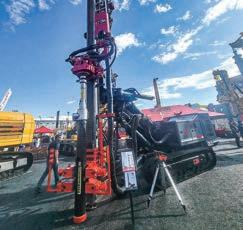

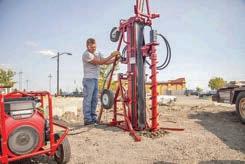
Hydraulic Power is available via a 20-hp or 24-hp Honda gas engine or a 19-hp diesel engine.
These engines come with a 15-litre fuel tank to ensure all-day operation, while the 25-cm fan on the oil cooler regulates temperature.
The hydraulic power source also serves as an attachment point for the stabilizer torque tube. For greater versatility, the power source can also be used to power a variety of other hydraulic tools on the jobsite.
For foundation repair, the Big Beaver can drill pier holies up to 40-cm in diameter.
The mast can be aligned in any position up to 15 de-
grees from vertical with the crank mechanism. To create an under-reamed footing at the bottom of the foundation pier hole, an optional belling tool is available, which provides solid support for slab and prevents pier uplift.
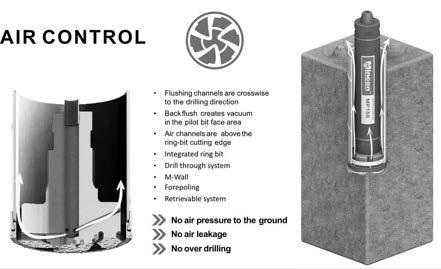
The Big Beaver can be paired with special tools and accessories to enable various drilling tasks. An optional Cathead Kit, which includes a tower kit, third hydraulic valve and spool, makes soil sampling and performing standard penetration tests convenient and economical. Additionally, the kit enables the Big Beaver to take undisturbed core samples, in 60-cm increments, with the optional Split Spoon Sampler.
Both Big Beaver models are designed to work with Little Beaver’s D-series augers, which range in diameter from 10 to 45-cm. Auger extensions enable drilling depths up to 9.75-metres with a 40-cm auger and 30-metres with a 15-cm auger.


Pictured here in the fall of 1947, is a railroad bridge being “modernized” at De Cew Falls near St. Catherines, Ontario. The Canadian National Railways bridge across 12-Mile Creek had to be repaired without interrupting rail traffic.
C.A. Pitts Company, based in Toronto, took on the challenge. To keep freight and passenger traffic moving ontime, the contractor utilized pipe-piles rather than other available piling. Once the pipe piling reached its final depth, the pipes were filled with concrete for the foundation of the new piers.
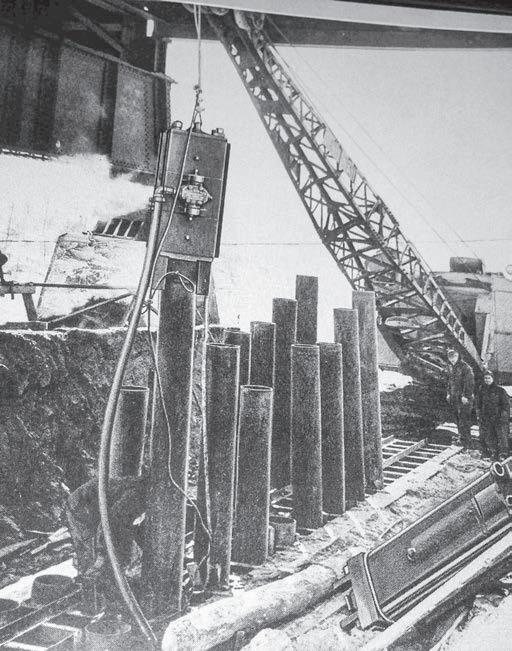
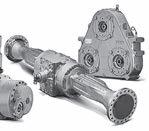
To drive the pipe-piling, the contractor selected two different McKiernan-Terry Ltd. steam powered double-acting drivers. The initial #7 driver got the pile as far as it could and then the larger #10-B3 driver finished the pile to grade. The Pitts crew had made a template to locate every pipe-pile, as can be seen in the photo.
Given the working height under the bridge, the usual pile-leads could not be used. The skilled Hoisting Engineer operating the Northwest 80D crane had to be highly experi-




enced. One missed direction from the foreman and the crane could easily end up in the creek!
The Historical Construction Equipment Association (HCEA Canada) 2023 event
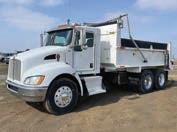
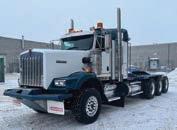

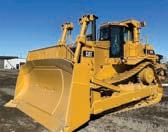
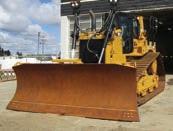





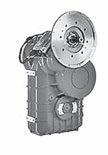






Wheels & Tracks in Motion will be held on June 10 and 11, while the Last Blast event takes place on October 14.
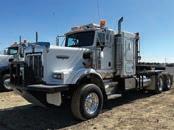
Both events are held at the Simcoe County Museum near Barrie, Ontario. To see more than 60 restored pieces of vintage construction equipment in action, be sure to attend. HCEA Canada is a proud Heritage Partner of the Simcoe County Museum. Visit their website at hceacanada. org for updates.
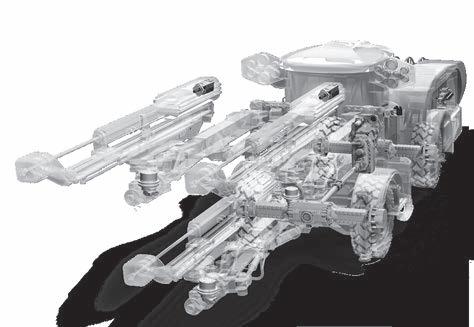
National Pile Croppers (NPC) has redesigned its hydraulic Contig 600 pile cropper to reduce its width while maintaining its structural strength.

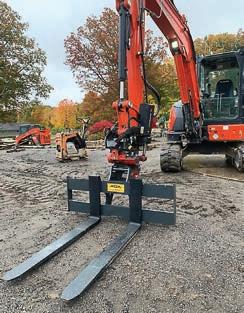
The original, award-winning Contig 600 unit was larger than anticipated and has the functionality to crop 750 mm piles. While this was a good problem to have, it also caused issues addressing a 600 mm contiguous pile with 150 mm pile spacing. So, NPC reduced the width, but maintained its structural strength while keeping the overall dimensions tight to a 600 mm pile. The weight and centre of gravity of the new Config 600 has also been moved to improve maneuverability.
“We have always stated we are constantly improving the equipment we manufacture, so, the launch of our new Contig 600 Cropper is just one development we are justly proud of,” says National Pile Croppers Managing Director Simon Price.
“Over the years we have continually refined and developed our offering, and we now are pleased to announce the release of the very latest in state-of-the-art pile cropping of contiguous piles.”


The 1,495-kg Contig 600 is built to reduce piles in a contiguous or secant wall formation where only two sides of the pile can be exposed and spaces between adjacent piles is tight. The pile cropper is designed to include two hydraulic rams that are mounted at opposing 180 degrees to provide the ability to position the cropper over the wall to reduce the piles. The wall thickness of the cropper allows it to slot between contiguous piles with spacing as close as 50 mm.
The New Contig 600 has already been subject to extensive field testing. It was recently used to by Churngold Construction
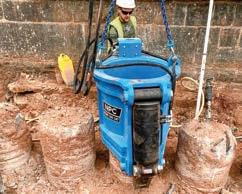
on a development in England. The concrete piles used in the development had to be dealt with efficiently and safely, with the resulting concrete residue reprocessed in an environmentally friendly manner.

“Churngold invited us to the site to see the difficulties faced with cropping of the piles. I must admit the complexities of the site, and the way the piles have been laid out, presented a challenge. Fortunately, we had been working on an updated version of our Contig 600 cropper. This would prove to be the ideal tool for the job,” explained NPC director Lee Aston.
The design and the development of the new Contig 600 overcame any issues related during stress analysis while attempting to achieve the optimal jaw to pile interface angle. NPC eventually achieved the ideal balance, and the latest version is now on site with Churngold cropping 600 mm and 450 mm diameter augured piles in a contiguous wall format. These were installed leaving a nominal spacing of 150 mm between adjacent piles, which has proven to be the perfect scenario for using the new Contig 600 V2.
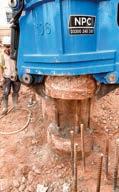
“Feedback from (Churngold Construction) on site has been highly complementary, stating the cropper is performing better than expected, and it was expected to do well,” Aston said. “The change in width dimension (of the new Config 600) had a major impact resulting in piles in the middle of the wall being able to be reduced where other croppers would foul on the adjacent pile resulting in the need for further cropping from the end of the wall of piles.”
The new Contig 600 is now available in the United Kingdom and will be introduced globally in the coming months.
Epiroc has upgraded the SmartROC T45 top hammer surface drill rig, to reduce emissions, boost productivity and enhance automation.
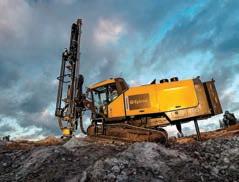
Optimized for quarrying and construction, the larger capacity and performance of the rig allows for maximized production, and fuel costs are reduced through only using the energy needed for the work at hand. Furthermore, Epiroc’s Smart technology provides valuable data to help manage and optimize workflow, which help to ensure that drilling always goes as planned.
“Efficiency is at the heart of the SmartROC T45,” said Ulf Gyllander, Global Product Manager at Epiroc. “More uptime means more drilling and using less fuel equals further cost savings. The productivity comes not only from state-of-the-art equipment but also from the ergonomic design choices and the Smart technology
that assist the operator every step of the way.”
Productivity is boosted thanks to precise drilling and consistency in operations, which delivers improved blast-results and further cost-savings all the way through operation.
The SmartROC T45 is the most energy efficient rig in its class, according to Epiroc, thanks to the smart Rig Control System (RCS).
The system constantly monitors compressor load and



engine rpm to ensure fuel is not wasted.

As well, energy consumption is reduced thanks to a hydraulic system that is optimized to deliver the exact amount of oil needed.
Enhanced automation
The control system of the SmartROC T45 is based on a proven, intelligent design which presents information to the operator via an easyto-use touchscreen interface. Enhanced automation helps achieve new levels in output, as a SmartROC does more of the work itself and reduces the demands placed on the operator.
“The intuitive SmartROC T45 is designed to dramatically reduce the risk of manual errors and human mistakes,” Gyllander said. “The operator enjoys assisted troubleshooting from the large touchscreen display, with monitored cables, sensors and modules.
The FOPS and ROPS cab offers excellent visibility, and is equipped with LED lights. An expanded lighting kit is available along with support for two cameras.
The productivity is further enhanced with the intelligent drill rig architecture on Epiroc’s standardized platform and Smart options and features such as the Hole Navigation System (HNS), Measure While Drilling (MWD) and ROC Manager.
“As a result, not only is the risk of manual errors reduced, but downtime is kept to a minimum,” Gyllander said.


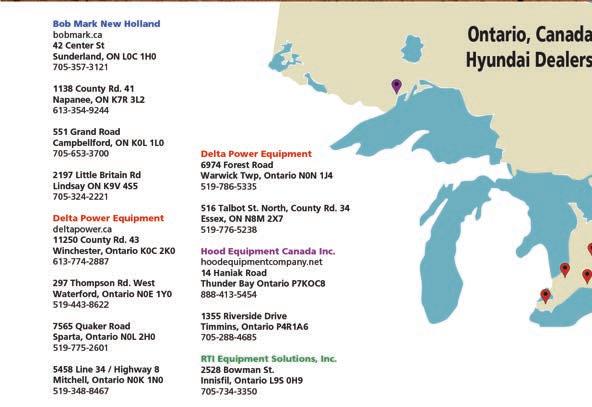


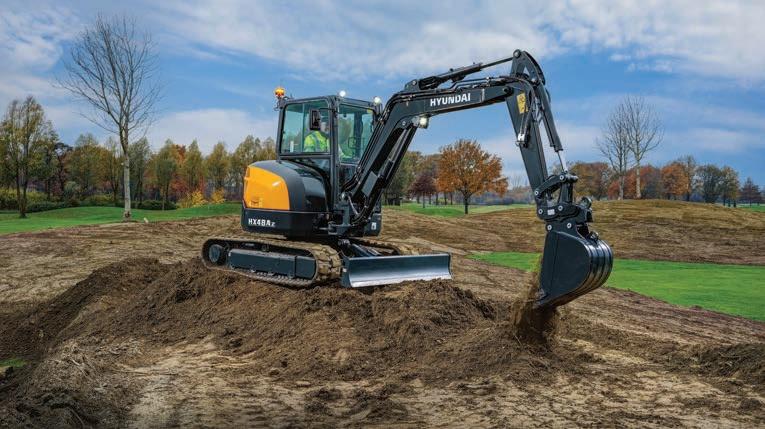




























As battery-powered construction equipment gains popularity, several light equipment manufacturers have adopted the Battery One Battery (BOB) system, which allows the same battery to power various machines from different OEMS.

Wacker Neuson began using the battery in 2014 and the system now works with 11 different products. Bomag adopted the BOB for its electrically powered rammers in 2021. Now Mikasa, Swepac and Enarco have decided to use the same battery in their compaction equipment.
To ensure instant recognizability among customers and users, these interoperable batteries and chargers are all marked with Battery One branding.
“The availability of a multi-vendor interchangeable battery for construction equipment is key to the growing adoption of electromobility on building sites,” said Stefan Pfetsch, Managing Director of Wacker Neuson Produktion GmbH.
“Compatibility provides huge benefits for the customers. We see demand for battery-operated equipment growing all the time. With Battery One, we make it easier for customers to go electric – in particular to switch from products that were previously powered by conventional drive technologies.”
The lithium-ion Battery One battery is available as the BOB10 with 1,008 watt hours of output and the BOB14 with 1,425 watt hours of output.
The maintenance-free batteries use a push-button start and provide constant power output over the entire discharge phase, ensuring a consistently high level of performance.
As well, two Battery One chargers are available. The BOC7 is a 48 Volt 7 Amp standard charger and the BOC13 is a 48 Volt 13 Amp
fast charger. The BOC7 will charge the BOB10 in about 2.5 hours, while the BOC13 reduces the charge time to about 80 minutes. All batteries come in a transport BOX and the BOX13 comes with a 48 Volt 13 Amp charger to ensure the battery is ready to go when you hit the job site.
“Battery One’s compatibility across different brands and products will further increase the penetration of electric equipment and the sustainability of battery lifecycle management on construction sites,” said Ralf Junker, President of Bomag GmbH.
“Together with our customers, we are helping to make construction sites around the world more environmentally friendly.”
OEM collaboration
Future-fit battery technology is a key driver for the development and incentivization of sustainable products. Wacker Neuson intends to collaborate with other manufacturers incorporating the BOB system to establish a standard for construction equipment batteries.
To discuss the possibility of a battery standard, the vendors will engage in negotiations to establish the exact nature and implementation timeline for the concept while respecting antitrust requirements.
The collaboration is inspired by the idea that customers will benefit from cost savings when they invest in battery-powered products, creating strong momentum for the wider uptake of zero emission equipment on construction sites.

The establishment of a construction equipment battery standard would also simplify construction site workflows and logistics by eliminating the need to manage different battery and charging systems. The aim is to
make the battery system available to further manufacturers in the construction sector.

“A powerful and interchangeable battery solves a number of challenges on the building site, such as the need to extend battery runtimes, accelerate charging times and lower equipment and infrastructure costs,” said Hironari Kyoya, President of Mikasa Sangyo.
“All of this adds up to greater convenience for our customers.”
Wacker Neuson’s and Swepac’s interoperable products are already identified with the Battery One branding.
Soon, Bomag, Mikasa and Enarco will also be adding the Battery One logo to their compatible batteries.
Wacker Neuson has developed the APU3050e, the industry’s first battery-powered reversible plate.
The battery-powered reversible plate’s emission-free direct drive system and overall height make the machine ideal for working in trenches, indoors and on jobsites that have strict environmental or noise guidelines to follow.
The APU3050e reversible plate is powered by the Battery One battery system that is used for a variety of the company’s zero-emission products.
Alongside zero-emissions, a key benefit to the APU3050e is its ease of use.
It is started with the push of a button, even at low temperatures
and at high altitudes. Depending on the application, a single battery charge is enough energy to provide constant power for typical compaction tasks of smaller applications.
When the battery needs to be changed, it is simply removed from the charger and installed into the machine without any special tools.
The APU3050e reversible plate offers many features included on Wacker Neuson’s conventionally powered models. The guide handle continuously adjusts the speed with comfortable movement. As well, the system provides continuous forward and reverse travel speed along with spot compaction.

The APU3050e weighs 220 kg
and comes with a 50-cm wide base plate. It produces 3,060 kg of centrifugal force and can compact up to 570 square metres per hour. An integrated wheel set makes moving the machine around the job site or shop easier.
The motor of the APU3050e is mounted directly on the base plate and does not require a V-belt, which eliminates maintenace, reduces operating costs and the need for spare parts.
The rugged metal frame protects components from damage. The versatility of the Battery One system allows all the components to be used on Wacker Neuson’s single direction, battery-powered plates, rammers or the internal backpack vibrator.
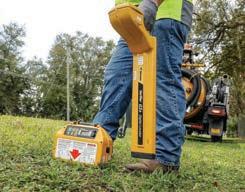
Vermeer has developed the new GPS-enabled Verifier G3+ utility locator, which delivers accuracy, optimized connectivity and intuitive controls.
The Verifier G3+ utility locator pairs with smartphones using the G3+ Map mobile app (available for IOS and Android) to plot location information, including depth, current index, GPS data, utility type, device name and the operator who performed the work. The data-capturing ability of the Verifier G3+ locator allows contractors and
utility owners to capture and store information about construction projects. In turn, the saved data can provide more information to their teams and customers.
“Tracking and storing records about the specific location of underground utilities is vital,” said Aaron James, Product Specialist II at Vermeer MV Solutions.
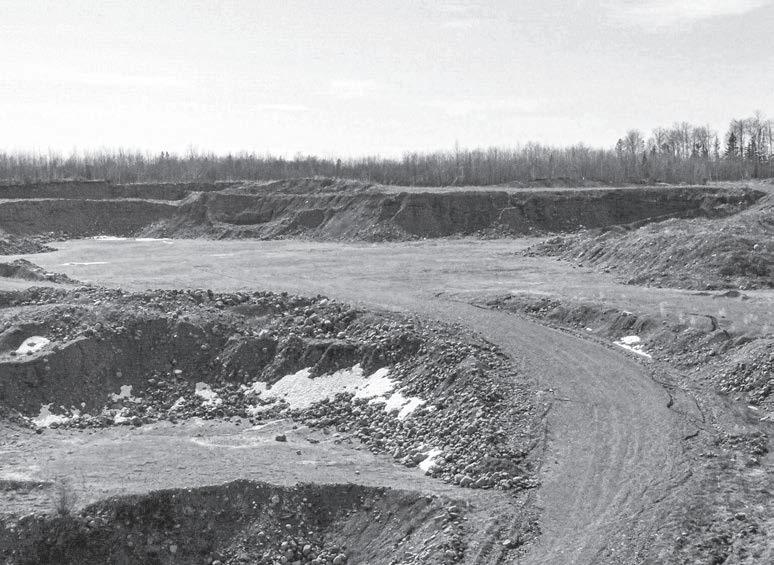
“With many lines out-ofsight in the congested areas, identifying and tracking one from another can be challenging. The technology that powers the Vermeer Verifi-
er G3+ utility locator helps operators accurately identify and track individual utilities in crowded rights-of-way. Its water-resistant, rugged design is well suited to the harsh everyday conditions that operators work in.”
Vermeer’s GPS-enabled Verifier G3+ utility locator can determine underground current direction against adjacent signals from other utilities. As well, it can detect ambient noise, allowing the operator to switch to a different frequency for a particular jobsite. Operators can adjust

Sullair is changing its name to Hitachi Global Air Power as its parent company moves to consolidate its compressed air solutions under one brand.
In mid-April, Hitachi Industrial Equipment Systems (HIES) announced the creation of the new Hitachi Global Air Power, which includes Sullair and Champion Compressors in Australia.
“We are the same organization, ownership, leadership and staff, but now we have a name that more clearly demonstrates Hitachi’s breadth of compressed air solutions, product lines and innovation that both Sullair and Hitachi bring to the market,” said
Yasuhiro (Charlie) Takeuchi, President and CEO of HIES.“In today’s relentlessly transforming society, Hitachi Global Air Power is uniquely positioned to raise the bar on the value we deliver to customers through our comprehensive portfolio of compressed air products and solutions such as Air as a Service.”
Hitachi Global Air Power will continue to offer a full range of integrated compressed air solutions, including portable air compressors, industrial air compressors (oil-free and oil-flooded), aftermarket OEM parts, fluids and more.
While Sullair will change its
corporate name, the branding will remain intact on its products, including Sullair, Champion and Air-One.
Sullair was founded in 1965 and became a subsidiary of HIES In 2017.
In the six years since the acquisition, HIES has leveraged the Sullair global sales network and complementary portfolio products and services to substantially increase the size, strength and competitiveness of its global air compressor business.
“The company name change from Sullair to Hitachi Global Air Power is only the latest move in a growing list of Hitachi's commitments to our business and brand,” said John Randall, President and CEO of Sullair.
“Since our acquisition, Hitachi has invested more
transmitter frequency and power outputs from up to 152.4 metres away using a wireless connection.
Saved data from the locator is transferred using Bluetooth 5.0 to the G3+ Map app. The data can also be uploaded to the Vermeer Projects bore planning tool.
The Vermeer Verifier G3+ offers operators three locating modes: peak, peak/null and null.
It has an exclusive water-resistant, one-size-fits-all coil clamp that does not need to encircle a utility to induce a
than $45 million in our company, and Hitachi has been instrumental in allowing us to expand our calibre and capabilities. We are excited about the opportunities ahead of us — for our business, employ-
ees, customers, channel partners and communities.”
Hitachi Global Air Power’s mandate is to provide ultra-high-efficiency compressed air products and connected solutions that help customers achieve
more energy savings and operational efficiencies. According to HIES, Hitachi Global Air Power will be instrumental in accelerating significant global growth through sustainable and digital products.
United Rentals is expanding its rental fleet with the addition of JuiceBox mobile power generators.
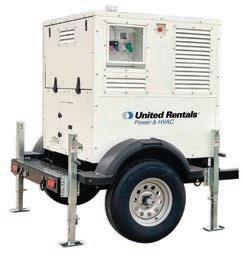
JuiceBox generators can be powered by propane or natural gas, providing lower emissions than diesel machines to charge electric vehicles, tools and other
equipment, advancing worksite electrification strategies.
United Rentals purchased the generators from Evergreen Mobile Power. They feature up to 40 per cent lower operating cost than diesel generators. As well, propane produces 17 per cent lower greenhouse gas emissions than diesel.
“Diesel engine emission regulations are driving companies to look for new options they can deploy,” said Dan Gribbell, PHVAC Region Sales and Marketing Director for United Rentals.
“Adding JuiceBox generators to our fleet provides another way we are helping our customers create
lower-emission worksites without compromising safety or productivity. With low operations costs and greenhouse gas emissions, the JuiceBox provides a smarter choice for the environment and a customer’s wallet.”
With a footprint of 127cm wide, 137-cm tall and 127-cm long, the generators deliver instant power up to 20 kW. As well, they can be linked together to address higher power demands.
The generators are equipped with dual interchangeable and removable electrical panels, making it easy to customize to various power needs. In addition to the environmental benefits, the generators run quieter than traditional models.
The generators join United Rentals growing equipment portfolio of low- and zero-emissions rental equipment options including aerial lifts, trucks, vans, compact excavators, e-dumpsters and battery systems.

5-YEAR/ 5,000 HOUR Full Machine Warranty
5-YEAR/ 10,000 HOUR Machine Structures Warranty
•
300
FT4 Isuzu AQ-6HK1X engine with design improvements to increase durability, performance, serviceability, and operator comfort from the previous model.
•
Superior fuel efficiency
•
Additional options such as HD arms, WAVES +, reversible engine fans, and Precision Grade on select models add to the perks of owning and operating a Link-Belt excavator.
•
WAVES (Wide-Angle Visual Enhancement System) with 270° birds-eye view standard, therefore improving site.
•
The spacious cab offers unprecedented ergonomics and comfort. A high-back seat with air, tilt, and heat features is standard. Adjustable pivoting armrests, headrests, seat height, and lumbar support provide operators comfort on long workdays.
•
RemoteCARE® comes standard with a new dualband modem to improve RemoteCARE communication and functionality with greater range and real-time data capabilities - providing 24/7 remote monitoring with zero subscription charges or fees.

ALBERTA
Equipment Sales & Service Ltd. Edmonton (780) 440-4010 essltd.com
BRITISH COLUMBIA
The Inland Group
Burnaby, BC 604-291-6431
Campbell River, BC 250-287-8878
Castlegar, BC 250-365-2807
Cranbrook, BC 250-426-6205
Fort St. John, BC 250-785-6105
Kamloops, BC 250-374-4406
Kelowna, BC 250-769-2933
Langley, BC 604-607-8555
Nanaimo, BC 250-758-5288
Penticton, BC 250-492-3939
Prince George, BC 250-562-8171
Quesnel, BC 250-992-7256
Terrace, BC 250-635-5122
Vernon, BC 250-545-4424
Williams Lake, BC 250-392-7101 inland-group.com
Paul Equipment
Balmoral (506) 826-3289 paulequipment.ca
Itec 2000
Rosslyn (888) 574-8530
Thunder Bay (888) 574-8530
Timmins (705) 267-0223 itec2000.com
McDowell B Equipment Ltd.
Sudbury (705) 566-8190
Barrie (416) 770-7706 bmcdowell.com
Stratton Equipment
Sales & Service
Stratton (807) 483-7777 strattonequipment.com
Top Lift Enterprises Inc.
Stoney Creek (905) 662-4137
Bolton (905) 857-5200 toplift.com
QUEBEC
Équipement JYL Inc. Chicoutimi (418) 698-6656 equipementjyl.com
Micanic St-Aug-D-Desm (418) 878-2241 micanic.com
Paul Equipment (506) 826-3289 paulequipment.ca
Top Lift Enterprises Inc. St-Laurent (514) 335-2953
Sherbrooke (819) 612-5438 toplift.com
YUKON TERRITORY
The Inland Group Whitehorse, YT 867-668-2127 inland-group.com
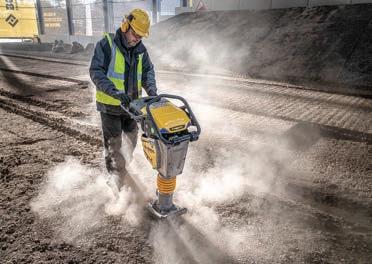
Bomag’s BT 60 e battery-powered tamper gives customers the best of both worlds – emissions-free operation and performance like its fuel-powered counterpart. The tamper is in its element where strict noise and emissions limits are set, and the go-anywhere tamper can be safely used in applications such as deep trenches, enclosed structures and tunnels.
Bomag’s BT 60 e tamper made its North American tradeshow debut at ConExpo.
With its rugged, future-proof design, the battery-powered BT 60 e tamper starts in all weather conditions, with the touch of a button.
It’s powered by a brushless, asynchronous 3.1-hp electric motor that requires no maintenance. As well, the tamper’s rugged casing fully
protects the motor from shock, dirt and damage at the jobsite for reliable operation. Eliminating the need for oil and filter changes, service costs for the battery-electric tamper are nearly cut in half compared to the fuel model, resulting in extremely low owning and operating costs.
Two battery sizes are available to operate the BT 60 e tamper – 1,000
Wh or 1,400 Wh. The two battery options are also interchangeable with Bomag’s battery-powered plate compactors to increase flexibility. The powerpacks are quickly and conveniently swapped out at the release of a lever without the need for a tool. Standard and fast chargers are available for the batteries, and the quick-charge capabilities enable a discharged battery to be ready for
use in less than two hours. On top of the advantages of lowcost, emissions-free operation, the new BT 60 e delivers the same compaction power as the conventional tamper. It features 696 vpm compaction frequency, a jumping height of 70 mm and impact force of 3,372 lbf. Offering a working width of 230 mm, it compacts at speeds reaching 20 metres per minute.
Atlas Copco has developed the first of its kind battery driven portable screw air compressor.

The B-Air 185-12 represents a major milestone in Atlas Copco’s roadmap towards a sustainable future.
The battery-powered air compressor delivers 5 to 12 bar of pressure, a stable flow rate of 5.4 to 3.7 cubic metres per minute and a 55-kWh battery storage capacity.
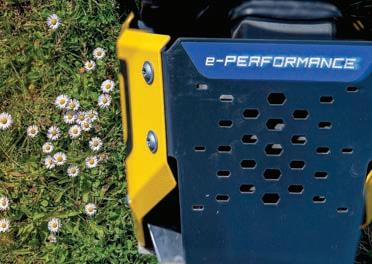
The B-Air 185-12 is scheduled to go into production in September.
“We are committed to accelerating the transition away from carbon-dependency and towards renewable energy sources,” said Maarten Vermeiren, Product Market-
ing Manager of Sustainability and Digitalization at Atlas Copco’s Portable Air Division.
“By introducing the first battery portable screw compressor, we want to play our part in enabling a sustainable transformation and help build a better tomorrow, for society and the planet alike.”
With power delivered from its onboard power pack, in operation a fully charged unit is independent of the need for fuel or a local power source. The air compressor has the capability to perform for up to a full typical work shift. In turn, it provides both portability and productivity for those working on sites where regular access to electricity is not practical.
Making the switch from an internal combustion engine to an electric motor provides several benefits, including less downtime and maintenance requirements.


With far fewer moving parts compared to a diesel-powered air compressor, the electric B-Air 185-12 only needs to be serviced every 2,000 hours, as opposed to 500 hours for a typical combustion engine unit.
The machine’s state-ofthe-art Variable Speed Drive (VSD) and permanent magnet motor lowers the total cost of ownership, automatically adjusting the motor speed to match air demand in real-time and increasing energy efficiency by up to 70 per cent.
veiled at Atlas Copco’s recent Journey to a Sustainable Future’ event in Antwerp, Belgium. At the event, the company gathered senior business leaders from across the industry to discuss tackling the transformation to a climate friendly, low-carbon future.
The new battery-powered unit marks a vital step in the electrification of Atlas Copco’s product offering and is one of many developments the company currently has in store to deliver sustainable solutions.
The battery driven portable screw air compressor came to life thanks to a long-term partnership with Perslucht Wilda, Atlas Copco’s distributor in The Netherlands for more than four decades.
breaking new ground, but always with focus on our customers!
We are your complete radiator and heat exchanger maintenance and servicing company.
Through Atlas Copco’s rigorous testing process, which includes rapid aging testing under harsh conditions and climactic chamber testing, the B-Air 185-12 has been proven to perform optimally even in the most extreme conditions – ranging from 45°C to -25°C, and 4,500 metres above sea level.
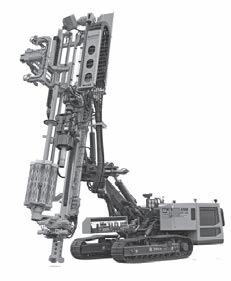
The unit is also designed to excel in densely populated urban areas where emission and noise pollution are tightly restricted. The quiet nature of the compressor enables operators to work without noise distraction, enhancing both productivity and safety.
The B-Air 185-12 was un-
“The B-Air 185-12 is a tangible symbol of our commitment to delivering real-world solutions to help our customers and their customers adopt a more sustainable way of working, and to turning the tide on climate change,” Bert Derom, President of Atlas Copco’s Portable Air Division.
“We ultimately want to offer a sustainable alternative to every user and every application, and this new battery powered unit is a leap closer to that goal.”
During the event, Atlas Copco also announced that Dutch infrastructure company Van Doorn made history by purchasing the first B-Air unit.

Caterpillar has introduced its new Compact ESS, a mobile battery energy storage system that supplements traditional mobile power solutions.
The energy storage system (ESS) enables its user to minimize fuel usage which in turn can reduce costs, associated maintenance requirements and greenhouse gas emissions when compared to continuous generator set usage.
Designed for rapid plugand-play installation and integration, the Cat Compact ESS module can be used with any combination of diesel, natural gas or renewable energy sources such as solar or wind. The ESS stores surplus power from these energy sources and then discharges from its reserve as needed.
Cat Compact ESS modules are designed for applications requiring long periods of low loads, such as at night, around-the-clock or time periods when a silent supply of energy is required. When used in these applications, the Cat Compact ESS modules can increase power efficiency, resulting in decreased fuel usage.
“Our customers are asking for additional options along with traditional power solu-
tions to help them reduce emissions and noise,” said Jason Kaiser, Senior Vice President for Caterpillar Electric Power division.
The storage system is equipped with an energy control module, and an onboard management system that continuously monitors load levels and automatically switches between generator set power and stored energy as necessary. This allows the generator set to only be used for recharging or accommodating higher loads.
Based on expected power needs, the Cat Compact ESS modules are ideal for equipment charging stations, offices, auxiliary buildings and security systems at construction, mining, oilfield and pipeline worksites.

The Cat Compact ESS also
enables remote monitoring and control of all connected systems, including generator sets, solar PV, inverters, grid, batteries, meters and sensors.

Caterpillar offers two models of the Cat Compact ESS module, with configurations available for 50 Hz or 60 Hz applications.
The Cat XES60 provides up to 56.8 kWh of capacity, while the Cat XES120 delivers up to 127.9 kWh of capacity.
Enabling full recharging in as little as four hours, Cat Compact ESS modules feature lithium-ion batteries to provide thermal stability, high discharge/recharge efficiency and high cycle life.
The storage systems offer simple, straightforward connections to generator sets and other energy sources,

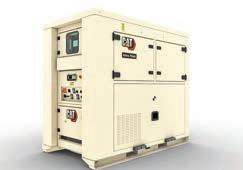
enabling quick and smooth worksite deployment.
Users of the Cat Compact ESS module can subscribe to advanced data collection, visualization reporting and alert capabilities. Through an easy-to-use web interface, this technology helps track and manage the operation of the system in real time, confirm desired cost savings, flag potential problems, perform remote troubleshooting, offer long-term archives of site performance history and identify opportunities for further operational or system
enhancement.
Cat Compact ESS modules are packaged in weather and debris-resistant enclosures for deployment in rugged
working conditions, and they can be mounted on tow trailers to simplify transport and repositioning around the jobsite.


Bomag Americas has named Brian Bieller as its new President of North American operations.
In the position, Bieller will report to Ralf Junker, President of Bomag Group
in Boppard, Germany.
Bieller’s experience in road construction equipment began 28 years ago in high school while working for a dealer.
Before joining Bomag, his
most recent position was President and CEO at LeeBoy, Inc. At LeeBoy, Bieller was responsible for managing all functions of the organization including manufacturing operations.
Prior to his tenure with LeeBoy, Bieller served as President and Regional General Manager, North America, for Dynapac, also a Fayat Company. With his experience leading successful
teams and his direct knowledge of Bomag products and market, Brian is well-positioned to make a positive impact on both Bomag Americas position in the market and internal team culture.
“We are happy to have Brian rejoin the Fayat Group in this new role, and we wish him success as he leads Bomag Americas into the next season of growth and profitability,” Junker said.
LBX Company, the maker of Link-Belt excavators, has announced Mike Reynolds has been promoted to the position of Vice President and Chief Financial Officer, effective immediately.
Reynolds joined LBX Company in 2013 as Corporate Controller.

In 2017, he became Human Resources Director and was promoted in 2020 to Senior Director Operations and Administration.
Outside of LBX Company, Reynolds has held several key management roles in his career including 14 years at NACCO Materials Handling Group in their lift truck division, automotive supplier ThyssenKrupp Presta, as well as six years of corporate administration with Kraft, General Foods and Lexmark International.
“Mike’s broad finance and operations background in various industries, his leadership competencies,
Mike Reynolds
and his proven track record and accomplishments within LBX make him well suited for the job,” said Eric Sauvage, President & CEO of LBX Company. Reynolds holds a Bachelor of Science Degree in Accounting with a minor in Business Administration from Olivet Nazarene University.
